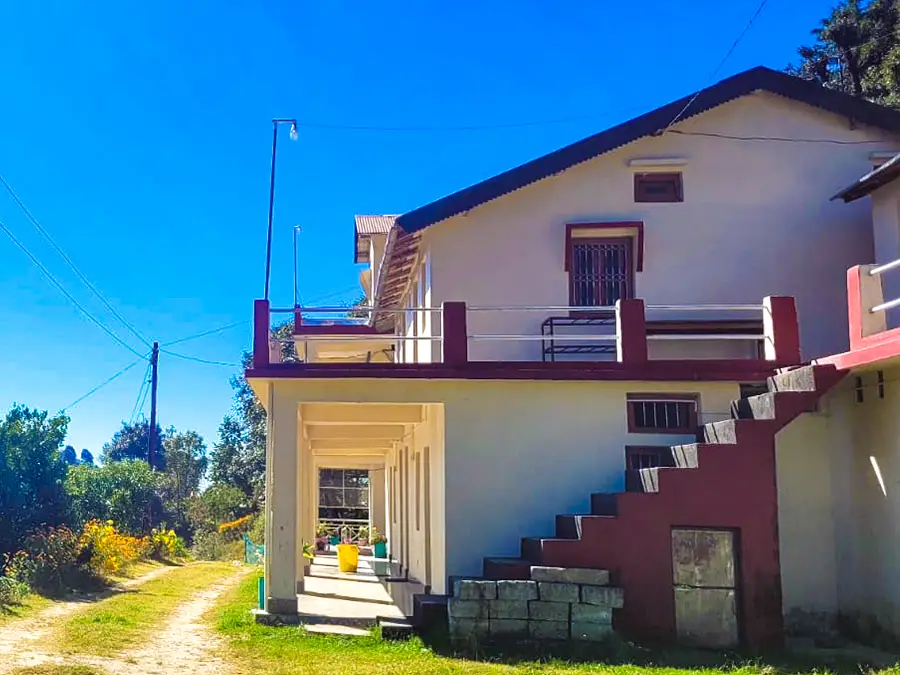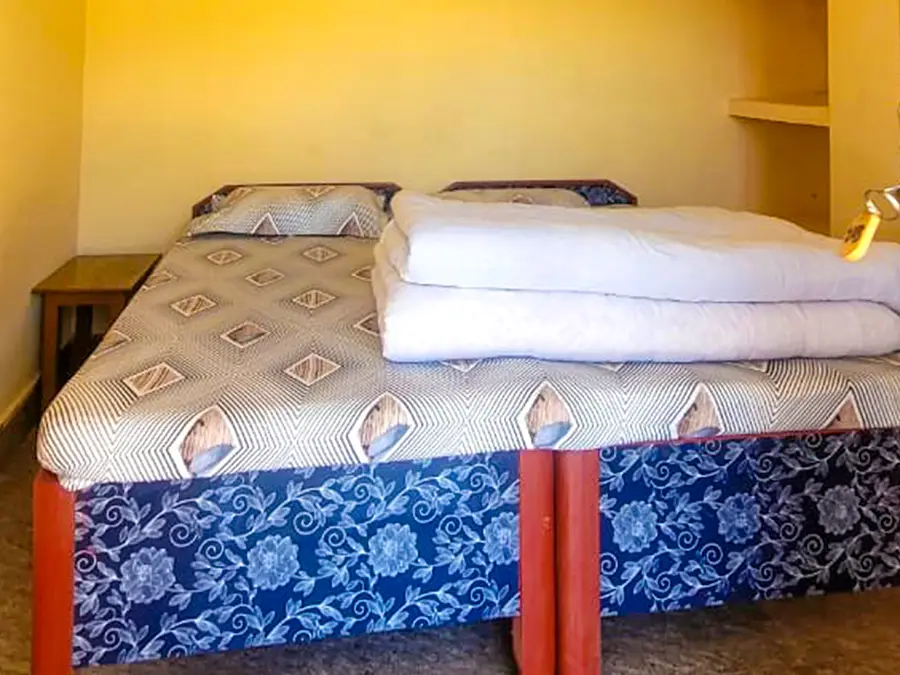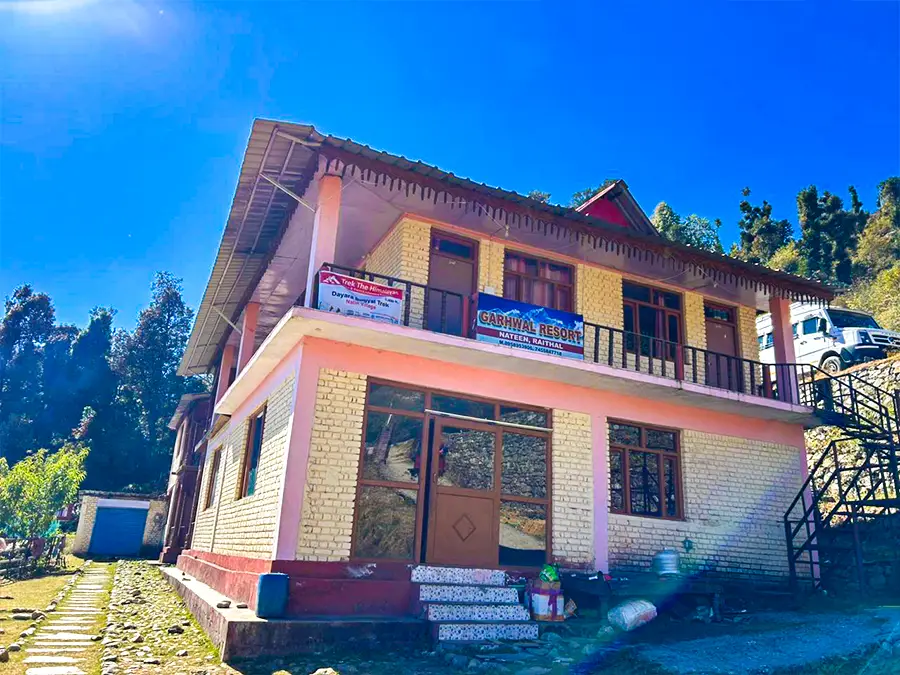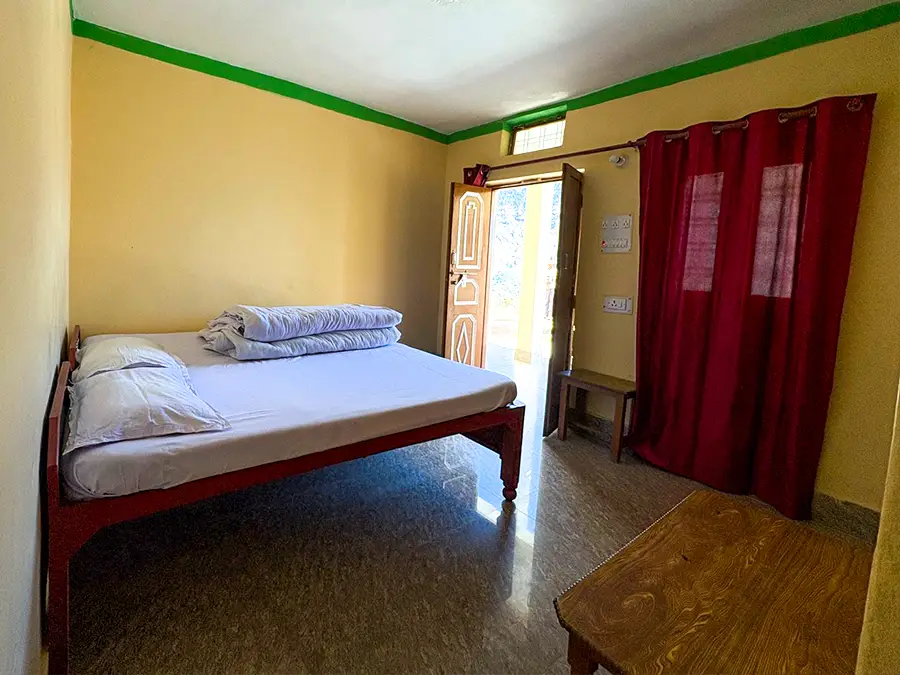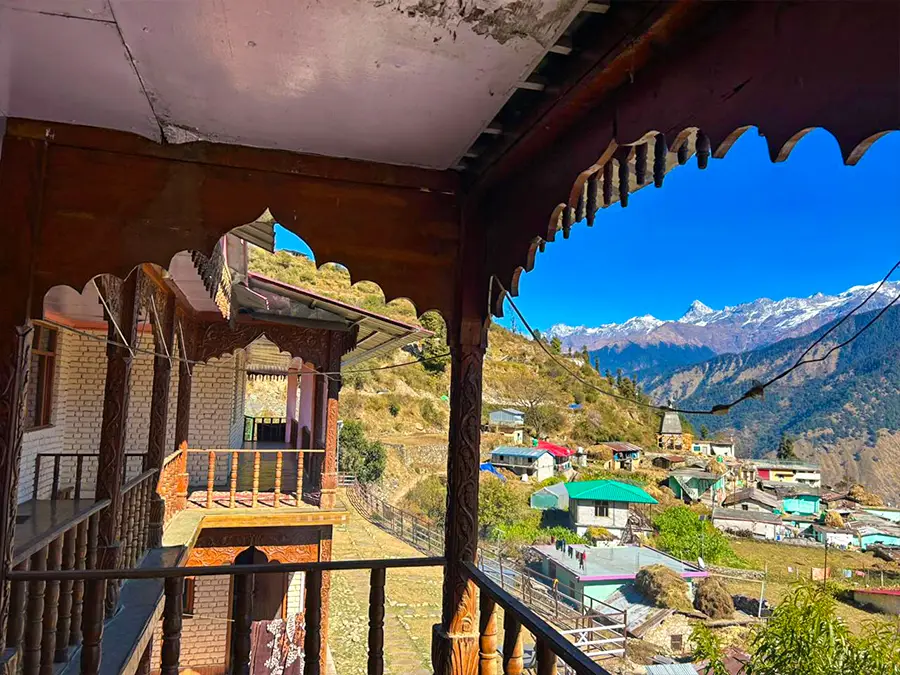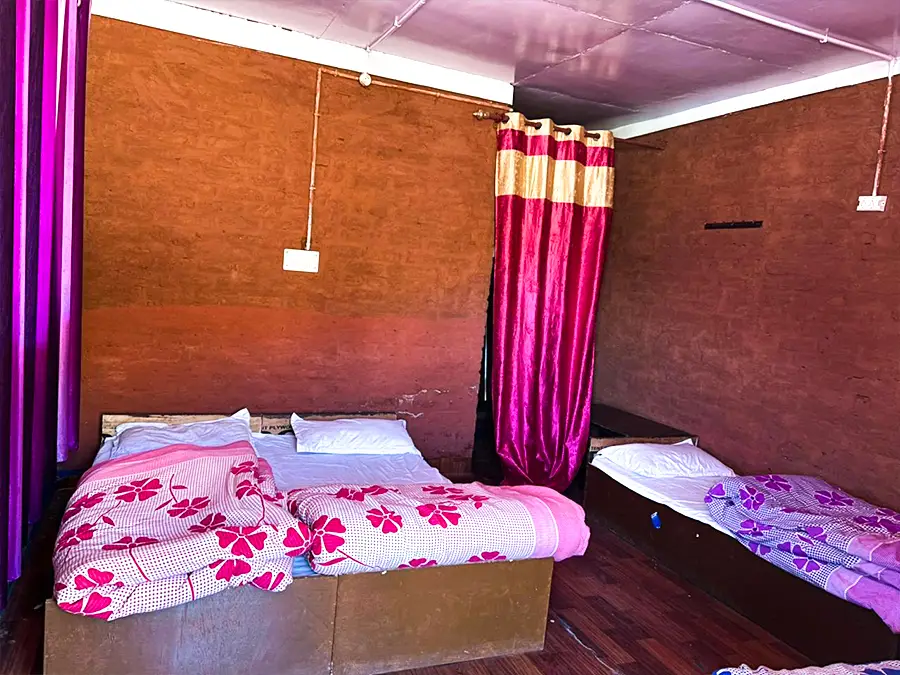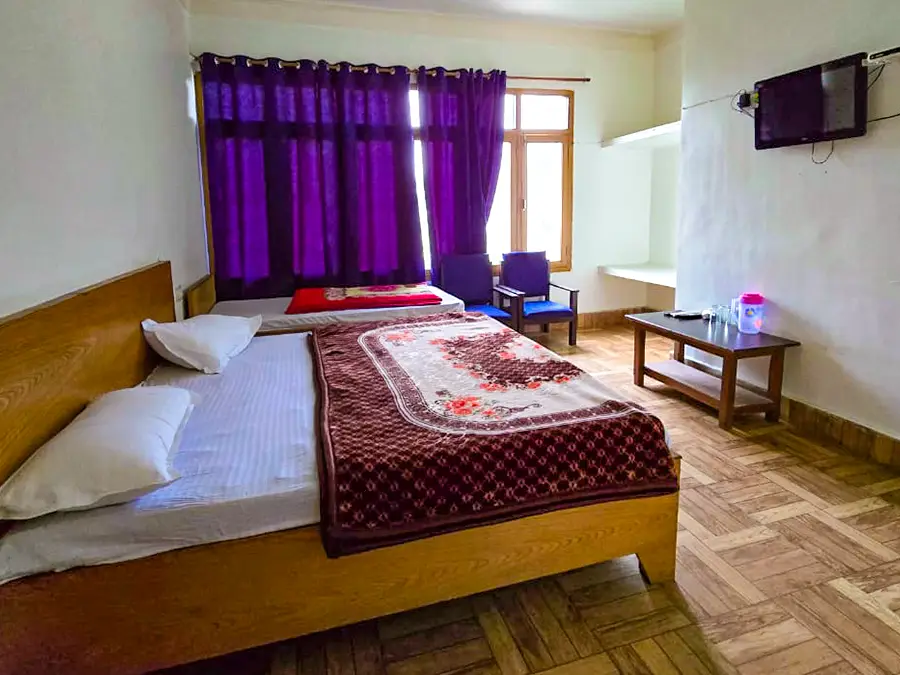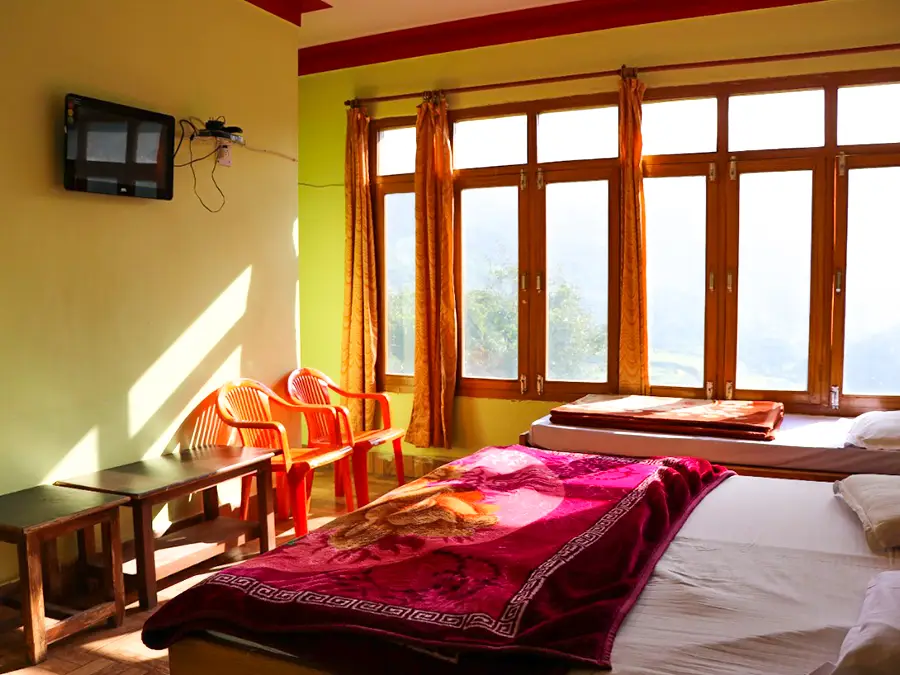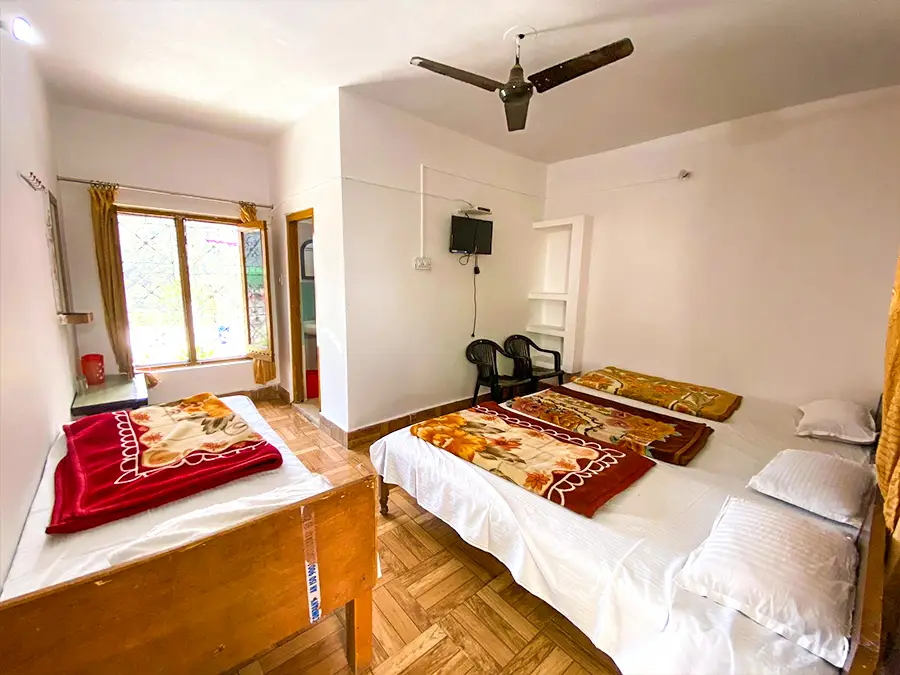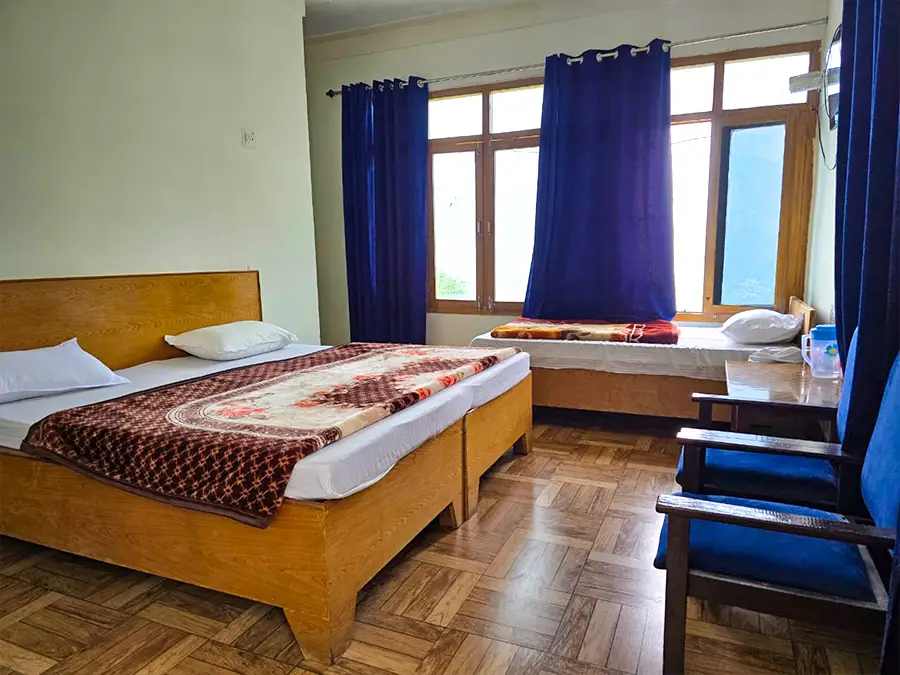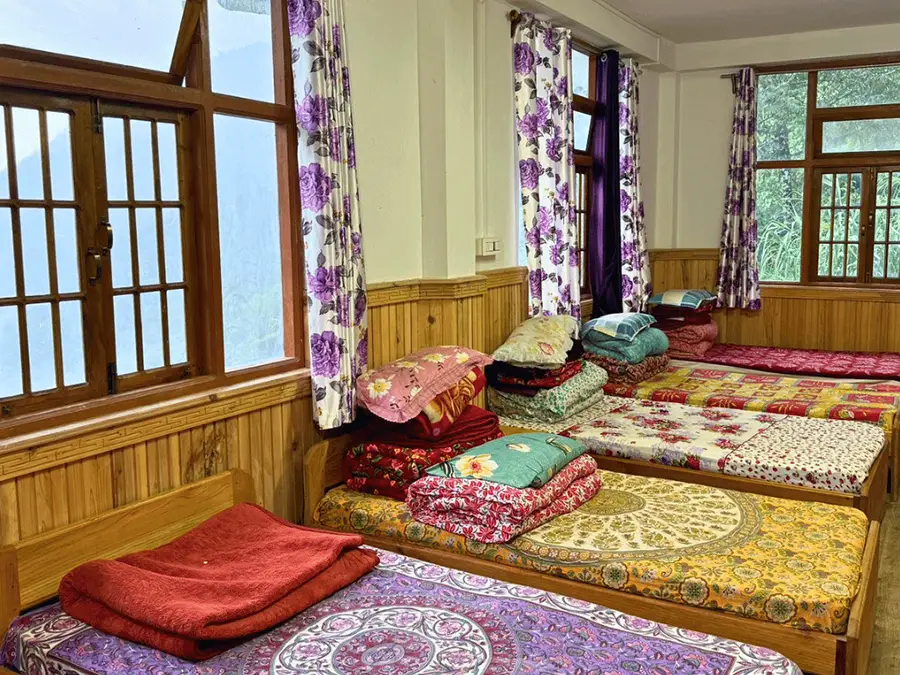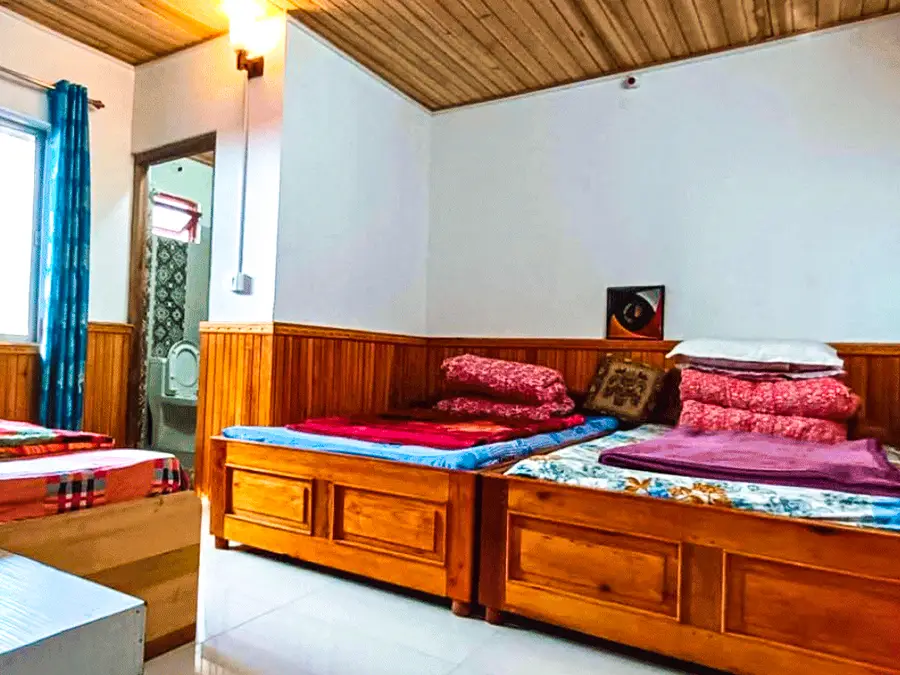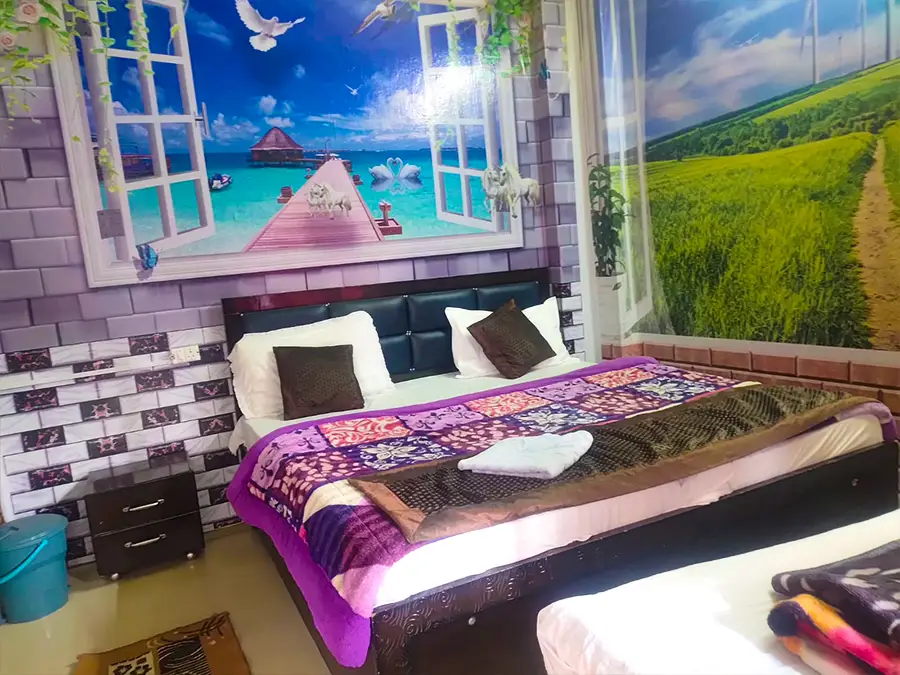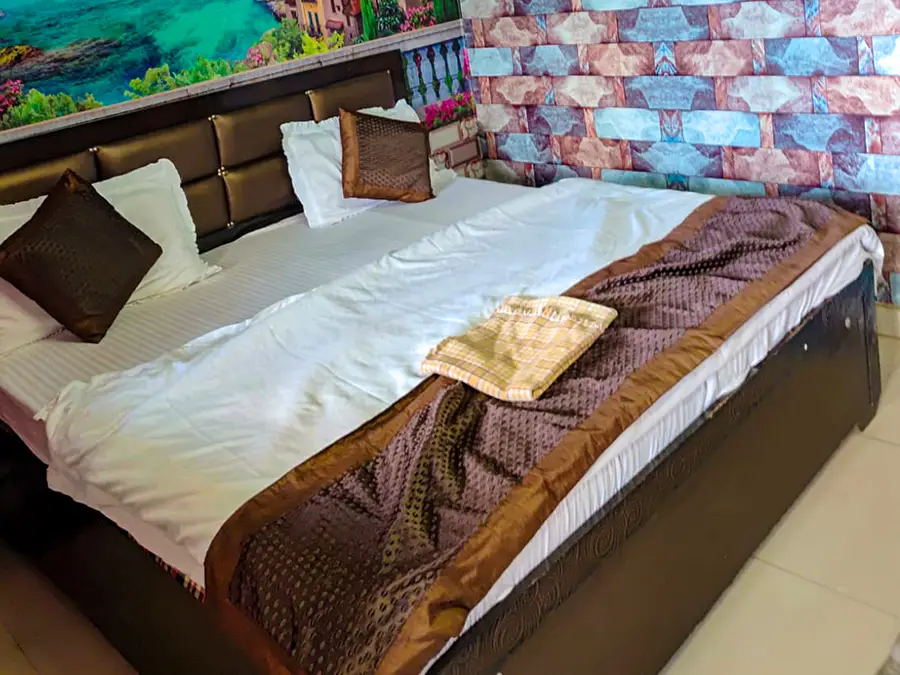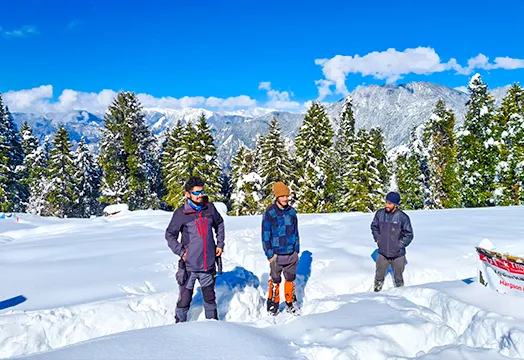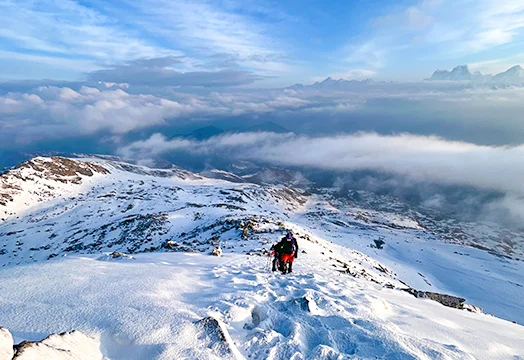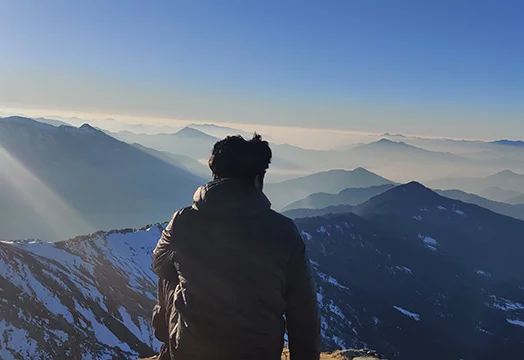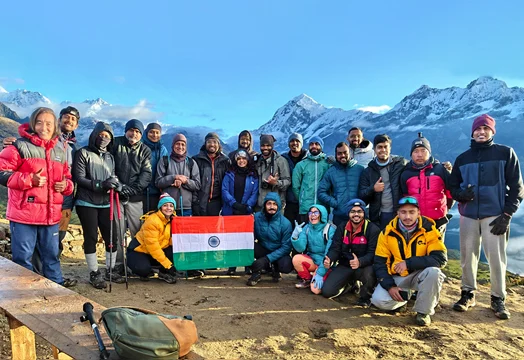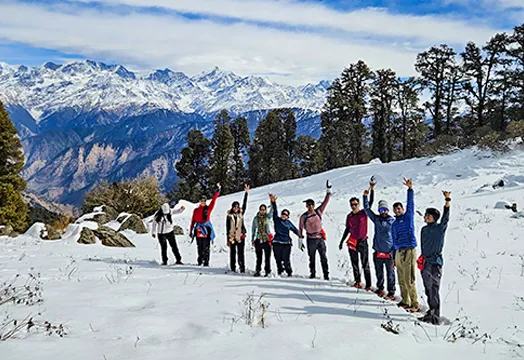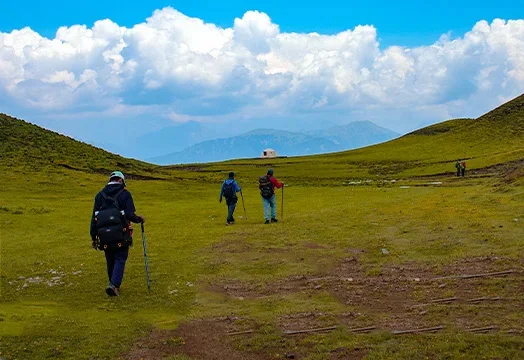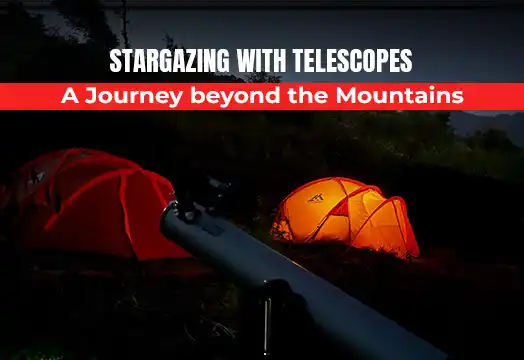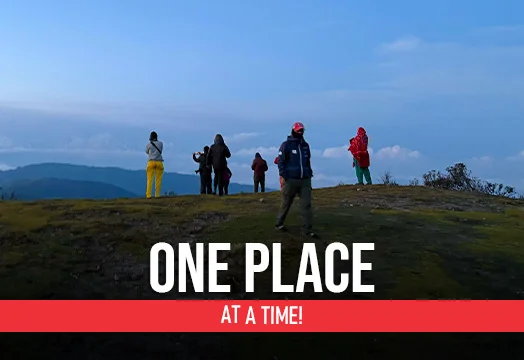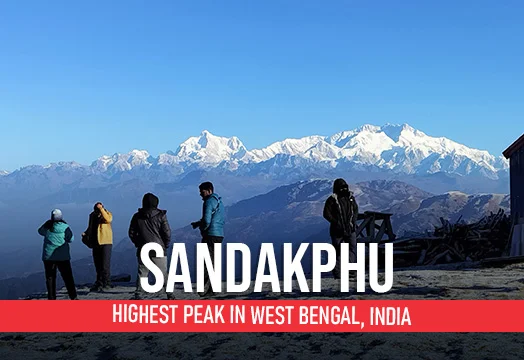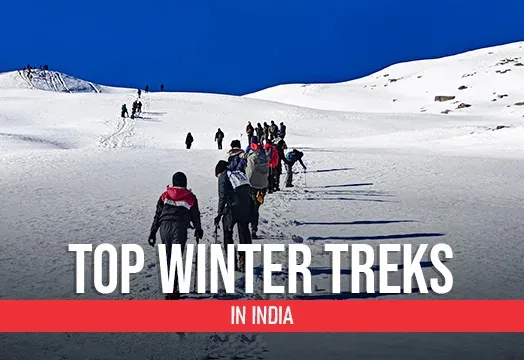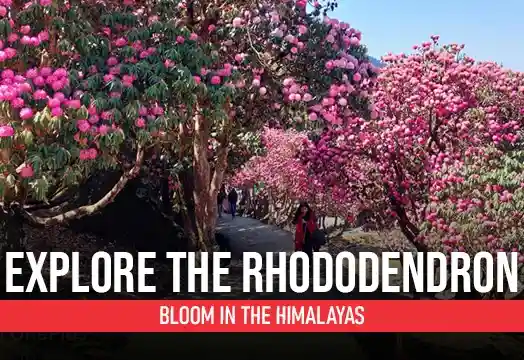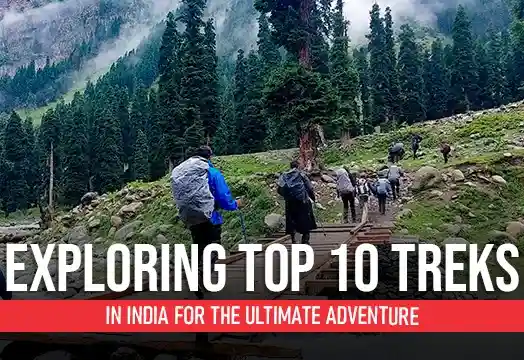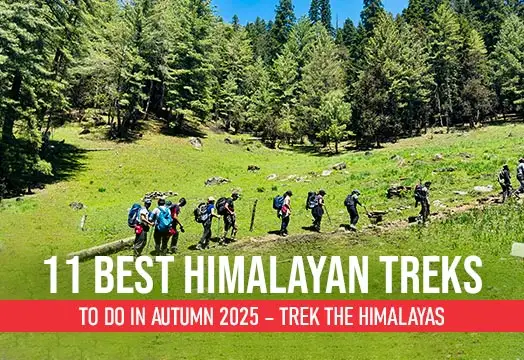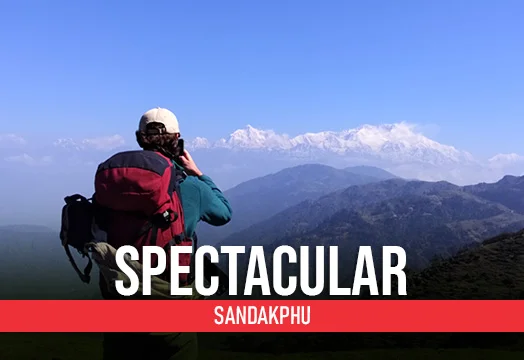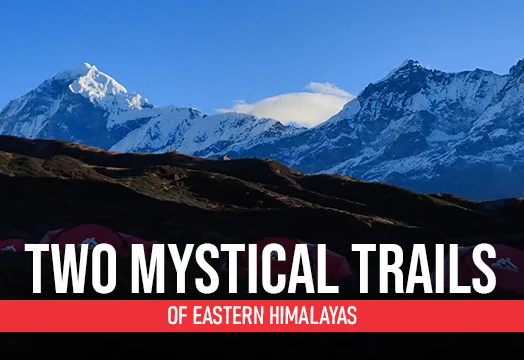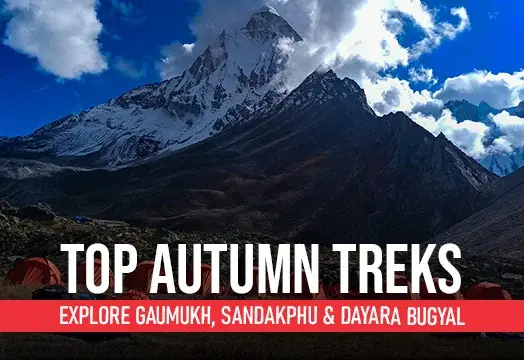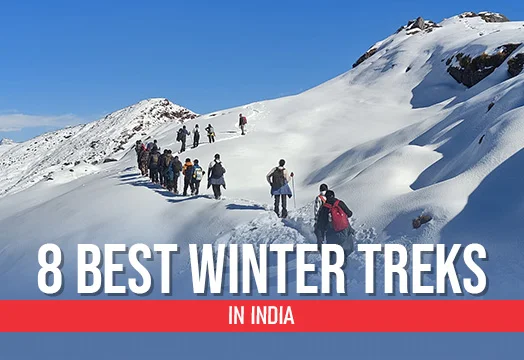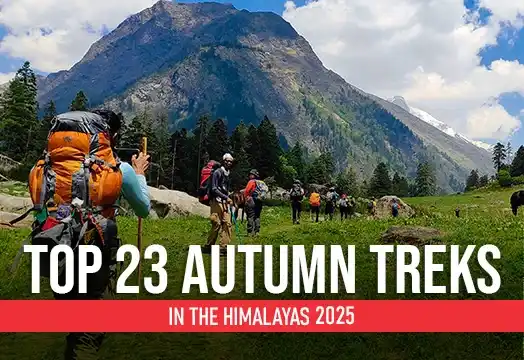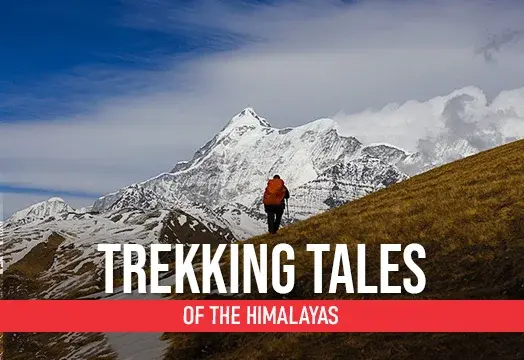Sandakphu Trek

Region
West Bengal | India

Duration
7 Days

Max Altitude
12000 Ft.

Trekking Km
68 KM

Grade
Moderate
Get in Touch with Our Trek Expert
91 7302321133 info@trekthehimalayas.comMonday - Saturday: 10 AM to 09.30 PM (GMT +5:30)
Sunday: 10 AM to 05.30 PM (GMT +5:30)
13900 /Person
- December-2025
- January-2026
- February-2026
- March-2026
- April-2026
- Services from Sepi to Sepi
- Pickup & Drop Location: New Jalpaiguri Railway Station
(For trekkers staying in Darjeeling, the pickup point is Sukia Pokhari, near , about 18 km from Darjeeling. TTH vehicle will arrive around 12:00 PM. HDFC Bank Ltd)
Pickup: 10:00 AM | Drop: 6:00–7:00 PM (weather/road dependent)
Keep a buffer day and arrive a day early to avoid delays. - Stargazing with 6" Dobsonian Telescope (Complimentary)
- Base Camp Accommodation: Guest house stay with attached washroom (no bunk beds).
- Complimentary cloakroom at base camp for safe storage.
- Avail Special Casual Leave if you’re a Central Govt. employee.
- Trek again for free
Add-ons
Insurance 280
- Insurance is mandatory.
- It is available for Indian citizens only.
- Non-Indians have to take insurance on their own.
- If you already have the high altitude trekking insurance, email for a refund after booking.
- The cancellation policy will be implemented in accordance with the trek cancellation policy.
- For more details about insuranceclick here
- + 5% GST will be applicable
Transport 2800
- Transportation New Jalpaiguri Junction (NJP) to Sepi & return is optional.
- Choose add-ons during booking. If missed, log in and add them later.
- Book transportation at least 10 days before the trek.
- Cancellation 4 or more days before the start of the trip results in a 100% cash refund.
- Cancellation less than 4 days from the start of the trip results in a 50% cash refund.
- Cancellations made on the trip date are not eligible for a refund.
- + 5% GST will be applicable
Offload 2400
- Backpack offload is optional.
- Choose add-ons during booking. If missed, log in and add them later.
- Book off-load at least 10 days before the trek.
- For offline bookings at the base camp, a convenience fee of Rs. 3000 applies.
- Cancellations made before the trip date will receive a full refund.
- + 5% GST will be applicable
Get in Touch with Our Trek Expert
91 7302321133info@trekthehimalayas.com
Monday - Saturday: 10 AM to 06 PM (GMT +5:30)
Overview
Trek Name: Sandakphu Trek
Days: 7
Adventure Type: Trekking
Base Camp: Sepi
Season:Spring | Summer | Autumn | Winter |
Month:January | February | March | April | October | November | December |
Country: India
Altitude: 12000 Ft.
Grade: Moderate
Rail Head: New Jalpaiguri (NJP)
Stay: Tea House(Separate for male & Female)
Food: Meals while on trek & at tea houses (Veg & Eggs)
Location: West Bengal
Distance: 68 Km.
Trail Type: Cross over trail | Start in one valley, traverse the pass, and ends in another valley.
AirPort: Bagdogra International Airport, which is 20 km away from New Jalpaiguri Railway station
Highlights:
- Services from Sepi to Sepi
- Pickup & Drop Location: New Jalpaiguri Railway Station
(For trekkers staying in Darjeeling, the pickup point is Sukia Pokhari, near , about 18 km from Darjeeling. TTH vehicle will arrive around 12:00 PM. HDFC Bank Ltd)
Pickup: 10:00 AM | Drop: 6:00–7:00 PM (weather/road dependent)
Keep a buffer day and arrive a day early to avoid delays. - Stargazing with 6" Dobsonian Telescope (Complimentary)
- Base Camp Accommodation: Guest house stay with attached washroom (no bunk beds).
- Complimentary cloakroom at base camp for safe storage.
- Avail Special Casual Leave if you’re a Central Govt. employee.
- Trek again for free

Why is Sandakphu Phalut a must - do trek?
- Witness a wide panoramic view of some of the world’s highest peaks including Mt. Everest, Kanchenjunga, Lhotse and Makalu from the same spot.
- You get to trek through the Singalila National Park that is extremely beautiful and rich in biodiversity.
- Since the Sandakphu trek is situated at the border you get to witness the beauty of two countries, India and Nepal together. You can enjoy a blend of cultures from West Bengal and Eastern Nepal.
- You get a unique experience of trekking through dense Bamboo forests with a mix of terrains and abundant flora and fauna.
- You can witness the famous “Sleeping Buddha” range.
- It is the only trek in India from where you can witness both Mt. Everest and Mt. Kanchenjunga.
- The sunrise and sunset views through the trek are majestic, you can see the sun rising above the sea of clouds from the Sandakphu top.
- In winters the Sandakphu trek offers a thrilling experience of snow trekking and camping in snow.
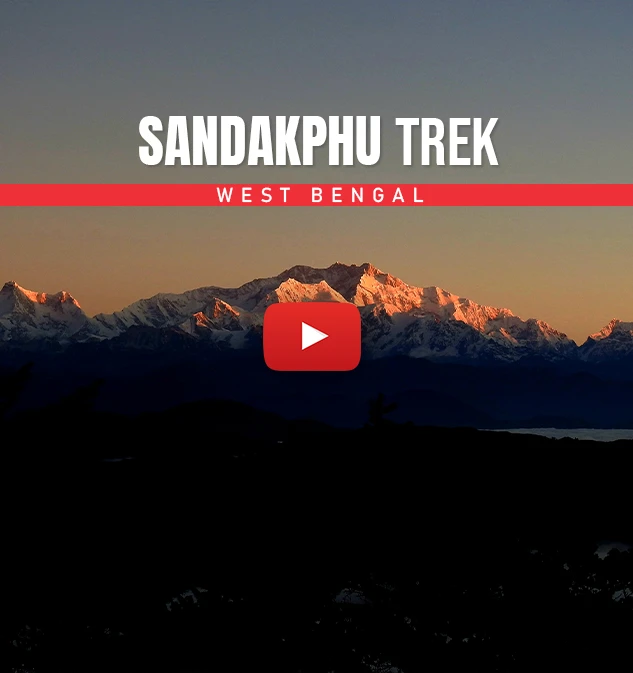
Who Can Participate
- Age Requirement:
- April to November: 10 years.
- December to March: 12 years.
- First-timers are welcome, though prior trekking experience is preferred. Good fitness is a must.
- Fitness Criteria:
- If the trekker wants to carry a backpack then he/she should be able to carry a 10-12 kg backpack. If opt Off-load option then the trekker should be able to carry 3-5 kg backpack.
- If a trekker's BMI is more or less than the normal range (18-28), please consult our Trek Coordinator before booking.
Loved it? Do it again for free!!!
At Trek The Himalayas, we understand that things don’t always go as planned. If you couldn’t complete your trek or just want to experience it once more, we’re giving you a wonderful opportunity – the chance to do the trek again without having to pay the trek fee again.
Pay a one-time fee to select your favourite trek, and you can repeat it as many times as you want within 5 years.

Terms and Conditions:
- The offer is valid for 5 years from the trek departure date.
- Participants are not required to pay the trek cost again, but they will need to cover transportation, insurance, and trek permit costs.
- This offer is non-transferable and is only applicable to TTH's limited fixed departures.
- The offer does not apply if the participant has received a refund, a voucher, or a transfer to another trek that has been used previously.
- The offer will be activated once the participant reaches the trek base camp.
- This is not an offer linked to any purchased package; rather, it is an initiative extended by TTH out of goodwill, without any cost to the trekkers.
- Trek The Himalayas reserves the right to cancel this offer at any time, in case of:
- Disobeying the safety regulations, trekking rules, or the code of conduct
- Black listing due to bad behavior, payment issues, or providing inaccurate information
- Anything that would damage the brand or reputation of TTH
- In order to rebook, just fill in our booking form online or call our team.
Sandakphu Trek Itinerary
Drive from NJP to Sepi
- Altitude: 6,400 ft.
- Drive Distance: 130 km | 7 hrs
- Accommodation: Tea House
Your journey to the beautiful Sandakphu will begin today. Today you will be driven towards Sepi, which is the base camp for the Sandakphu- Phalut trek. It is an uphill drive of about 130 kilometers to the base camp and takes about 7 hours. You will be passing through the native tea estates of Darjeeling and Sikkim as you drive towards Sepi. You must try momo and Thukpa, which are very delicious and simply mouth watering.
En route, your first stop would be Mirk, which is also a popular tourist destination in West Bengal. The picturesque and quaint hill station is located near the serene hills of the Darjeeling district. The climate and natural beauty of Mirik attract a lot of tourists here. We will reach Mirik at around 1 pm. There we will have our lunch. There you can try local delicacies, they are simply great. Breakfast and lunch are not included in the trek cost, however we will pause for meals.
After lunch, we will resume our journey again towards Sepi, which is a pretty campsite. On your way to Sepi you will also cross many other charming villages, the more you travel uphill, the more tranquil it becomes with a quiet environment.
You will stay in a homestay for the night, as you reach there you can freshen up, stroll around for short walks and then have dinner and rest for the following day.
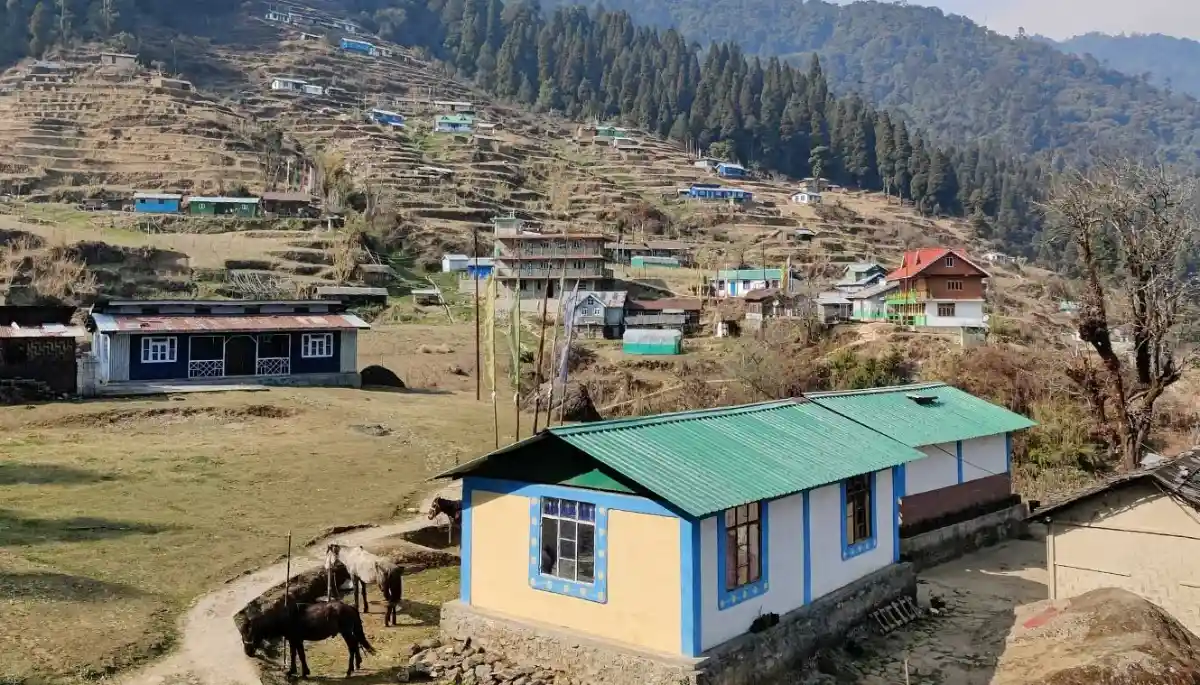
Sepi to Samanden via Ramam
- Altitude: 7,500 ft.
- Trek Distance: 14-15 km | 7-8 hrs
- Accommodation: Tea House
It's the second day of your journey. When you wake up, have a warm delicious breakfast and lace up your trekking boots, today we are going to start our trek towards Sandakphu. Starting the day early, it is a considerably easy walk to Ramam with a gradual ascent and some steep sections. Maintain a steady pace and keep taking short breaks if needed. Ramam is approximately 3.5 kilometers away from the Sepi campsite.
The trail here is a constructed route for most parts and you will notice several cut fields and tiny dwellings on the way. Take a short break at Ramam if you need and then we can head towards Samanden.
As you move out of Ramam, the trails become more quiet with the huts disappearing and the forest trails opening up. Walking through the quiet forest with the sound of nature all around you is a great experience in itself. The Singalila Range is quite popular for its abundance of greenery and you can now feel the same. For about 6 kilometers you will traverse through the forests until you arrive at a bridge.
After the bridge, it is a steep climb for 15 minutes or so, following which you will arrive at a zone where there are stone benches, each dedicated to locals who have passed away. The locals made these benches with the intention that those who have passed away can serve the passerby even after their death by providing them with a place to rest.
From here the trail begins to ease out a bit, then you will arrive at a clearing dotted with wooden huts and farmlands. This is the beautiful Samaden village. Samaden has a very picturesque setting and the locals here are very friendly. You will be greeted with incredible hospitality, you can chat with the locals and hear interesting stories.
Samaden is an ideal location to halt for the night, you can rest here. At night have dinner, enjoy the night sky and then rest for the following day.
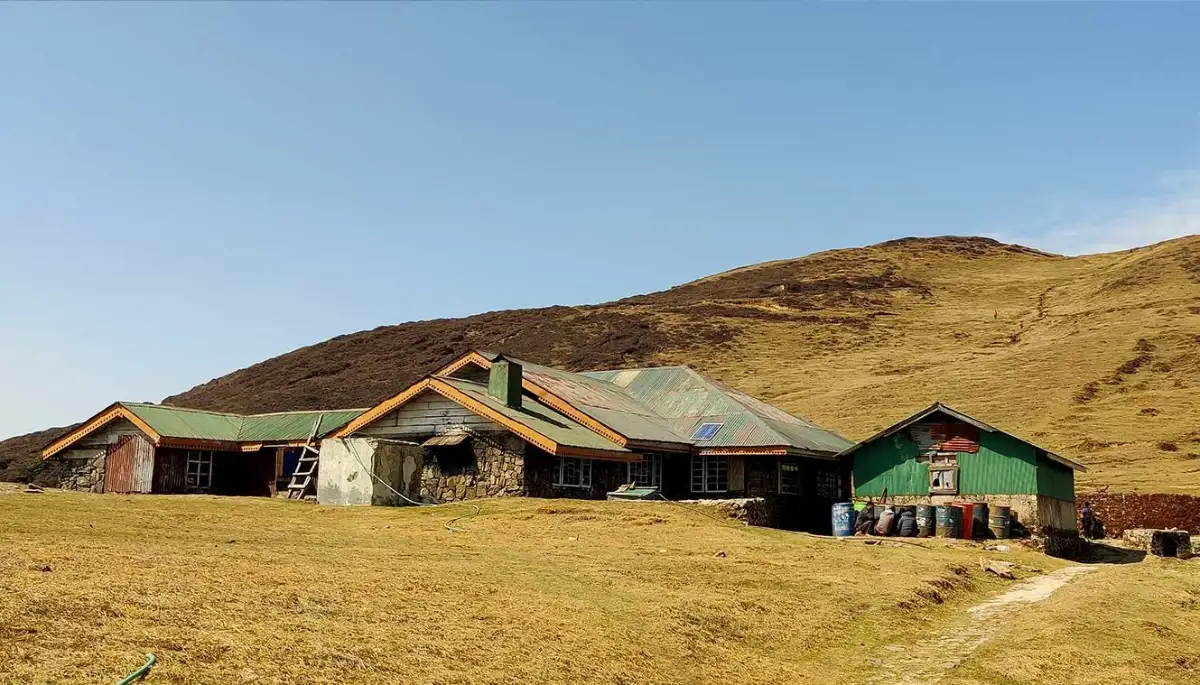
Samanden to Phalut via Gorkhey
- Altitude: 3500 m / 11500 ft.
- Trek Distance: 15 km | 7-8 hrs
- Accommodation: Tea House
Today we will begin early in the morning and trek from Samaden to Phalut. It is about 15 kilometers of trek and might take around 8 hours.
You can have a warm breakfast at the teahouse, then begin with trekking. From Samaden a few kilometers ahead is Gorkhey. There you can see the Gorkhey Khola that flows through the village of Gorkhey after which it is named. Crossing the picturesque setting we will head towards Phalut.
You will again cover long sections of forested trails today, be prepared as you will have to continue ascending for a long distance, and at some points, the ascent can be pretty steep. While trekking through the forested path you would spot many Oak and Rhododendron trees. Maintain a steady pace along the trek, keep taking short breaks and stay hydrated.
Phalut is one of the highest points of the Singalila Range, and the second highest point after the Sandakphu ridge. On your way to Phalut you will get to see the Singalila Range closely and you can get a stunning view of the Kanchenjunga. The closer you get to Phalut the more beautiful the landscape gets.
As you reach Phalut, you can have a delicious dinner, then rest. Keep in mind that Phalut does not have electricity, so keep extra batteries and power banks with you for your gadgets.

Phalut To Thokum
- ltitude: 3415 m / 11200 ft
- Trek Distance: 11-12 km | 6-7 hrs
- Accommodation: Tea House
Today, we will trek towards Thokum from Phalut. We will begin trekking in the morning after breakfast. If you didn’t know, Thokum campsite is located in Nepal, so we will be skirting the Indo- Nepal border into Nepal. Thokum is a beautiful campsite that falls on the way to Sandakphu between Sabargram and Sandakphu. The valley has a very soothing and relaxing vibe with beautiful meadows and a picturesque setting.
On your way to Thokum, you might spot a few yaks and cross a few meadows, then you would have crossed the Indo-Nepal border and would be in Nepal. Although it is a remote and unknown location, the views here are stunning and extremely admirable. The route to Thokum is also lined with a thicket of Rhododendron trees that remain covered in snow during the winters.
From Thokum, several routes branch into Nepal, and you can witness the sleeping Buddha formation in the backdrop as you cross some abandoned huts and cattle grounds. This will be your campsite for the night, we will stay in a tea house here, have dinner, and then rest for the next day’s trekking.
Thokum To Aal
- Altitude: 3500 m / 11600 ft.
- Trek Distance: 9-10 km | 4-5 hrs
- Accommodation: Tea House
Today we will trek from Thokum to Aal, which is about a 10 km walk. From Thokum, you will have to take the route that branches into the southwest direction towards Aal. Aal is the closest campsite to the Sandakphu summit and is situated at a scenic location. Today’s trek is not as tiring as other days and the trail is comparatively easier. A few kilometers ahead of Thokum lies the Aal campsite, which offers a very beautiful view of the Kanchenjunga ranges and the adjacent peaks. On a clear day, you can also see the Sleeping Buddha formation.
Enjoy a hot lunch at the Aal campsite today and you have the evening to spend at your leisure exploring the area. You will still be in the Nepal territory and as you move towards Sandakphu you will again move to Indian territory. You will stay in a Tea house in Aal and you can see the beautiful Himalayan views from here. At night you can have a warm dinner and rest well, tomorrow we will move towards Sandakphu.
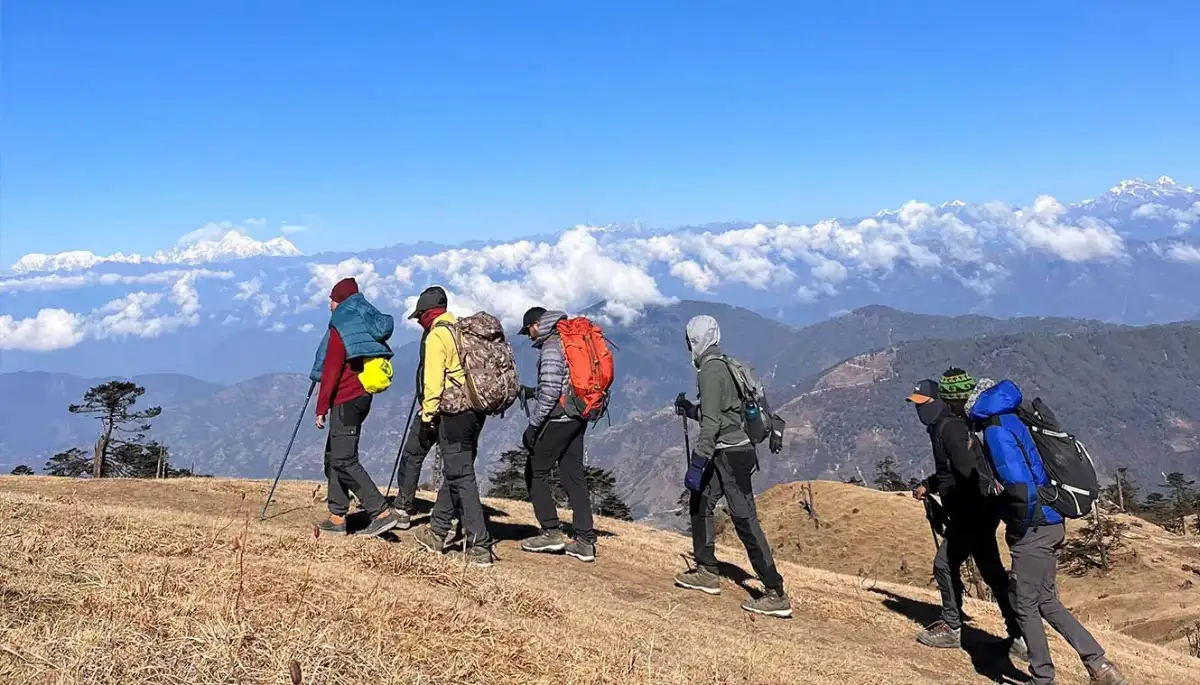
Aal To Timburey via Sandakphu
- Altitude:
- Sandakphu: 3650 m / 11900 ft.
- Timburey: 2100 m / 6800 ft.
- Trek Distance: 14 km | 7-8 hrs
- Accommodation: Tea House
Today we will trek from Aal to Sandakphu and then to Timburey. The distance from Aal to Timburey is about 14 Kilometers.
We will begin early in the morning so that you can witness the majestic sunrise from the top of the Sandakphu. As we start from Aal after 3 kilometers we will reach Sandakphu.
This will be one of the most scenic experiences you will have throughout the trek, the first rays of the sun over the snow capped sleeping Budhha cover it in an alpenglow, the sun appears as if it is rising from above the clouds. The sight is once in a lifetime, and the beauty is difficult to describe in words.
You can click beautiful pictures and spend some time there, then we will head towards Timburey, our next campsite. From Sandakphu it is about 10 kilometers to Timburey and might take around 5 hours to complete the trek. As you head towards Timburey, Gurdum is the first Himalayan village that you will come across. Gurdum is a postcard- perfect village with only 4-5 dwellings. It is one of the remote Himalayan villages. Surrounded by forests and mountains, Gurdum also offers a private stay for tourists in its scenic setting.
From here Timburey is quite close, after trekking for another few kilometers you will arrive at Timburey. It will be the campsite for the night. There are also a couple of home stays here and we will stay at one of the local houses.
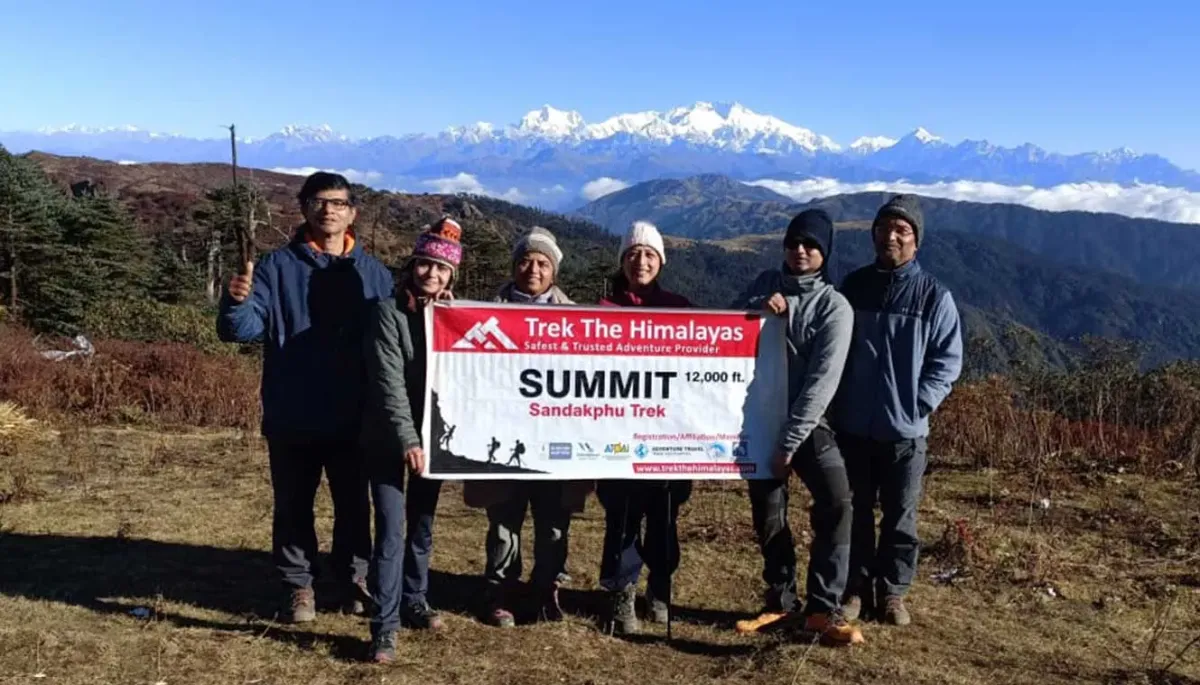
Timburey To Srikhola And Drive To NJP
- Altitude: 1920 m / 6300 ft.
- Trek Distance: 3 km | 1 hr
- Drive Distance: 130 km | 7 hrs
Today will be the last day of your trekking and also the last day in the mountains too. Your beautiful journey to Sandakphu ends today. After breakfast we will start trekking towards Shrikhola. It is a 3 kilometers descent to Srikhola and might take up to an hour.
Once we reach Srikhola road, we will head to Sepi by drive to collect our left luggage then we will drive you back to NJP railway station. We will drive back from the same roads that we came with, you will return with a lot of memories and adventures from the mountains. After reaching NJP in the evening, then you can continue with your further journey.
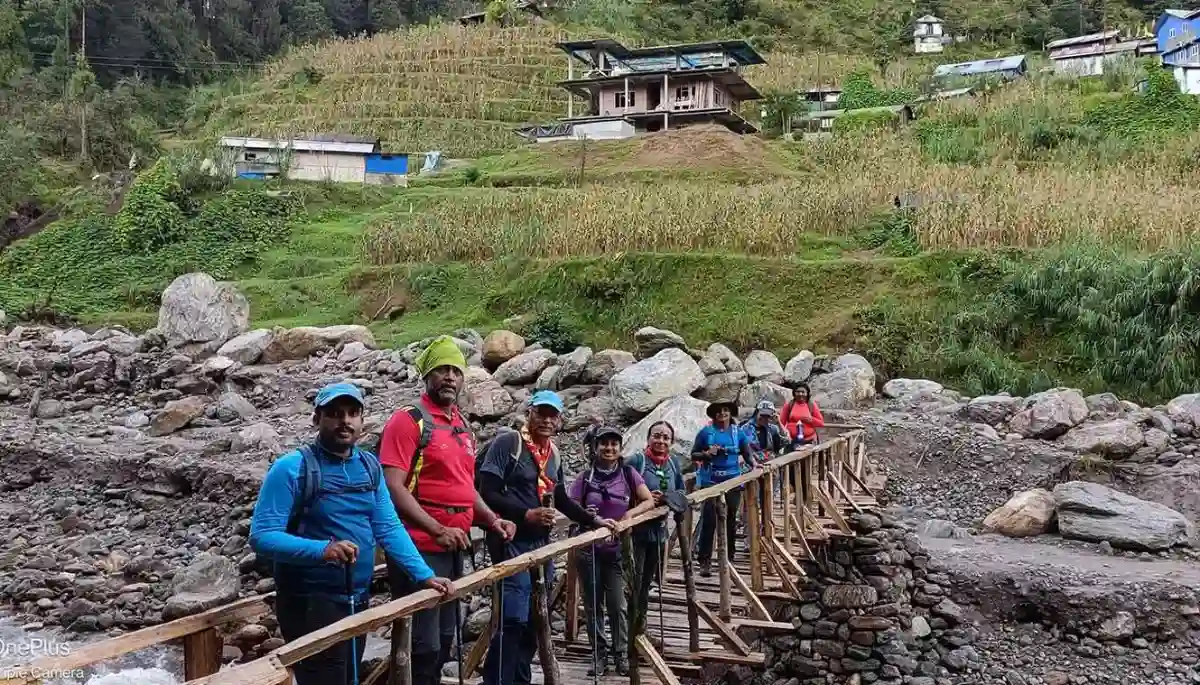
Day-1: Drive from NJP to Sepi
- Altitude(Sepi): 6,400 ft.
- Drive Distance: 130 km | 7 hrs.
Day-2: Sepi to Samanden via Ramam
- Altitude(Gorkhey): 7,500 ft.
- Trek Distance: 14-15 km | 7-8 hrs.
Day-3: Samanden to Phalut via Gorkhey
- Altitude(Phalut) – 3500 m/11500 ft.
- Trek Distance – 15 Km | 7-8 hrs.
Day-4: Phalut To Thokum
- Altitude(Thokam): 3415 m/ 11200 ft.
- Trek Distance: 11-12 Km | 6-7 hrs.
Day-5: Thokum To Aal
- Altitude(Aal) – 3500 m/ 11600 ft.
- Trek Distance – 9-10 Km | 4-5 hrs.
Day-6: Aal To Timburey via Sandakphu
- Altitude(Sandakphu): 3650 m/ 11900 ft.
- Altitude(Timburey): 2100 m/ 6800 ft.
- Trek Distance: 14 Km | 7-8 hrs.
Day-7: Timburey To Srikhola And Drive To NJP
- Altitude(Srikhola): 1920 m/ 6300 ft.
- Trek Distance(Timburey - Srikhola): 3 km |1 hrs.
- Drive Distance: 130 Km | 7 hrs.
Sandakphu Trek Graph
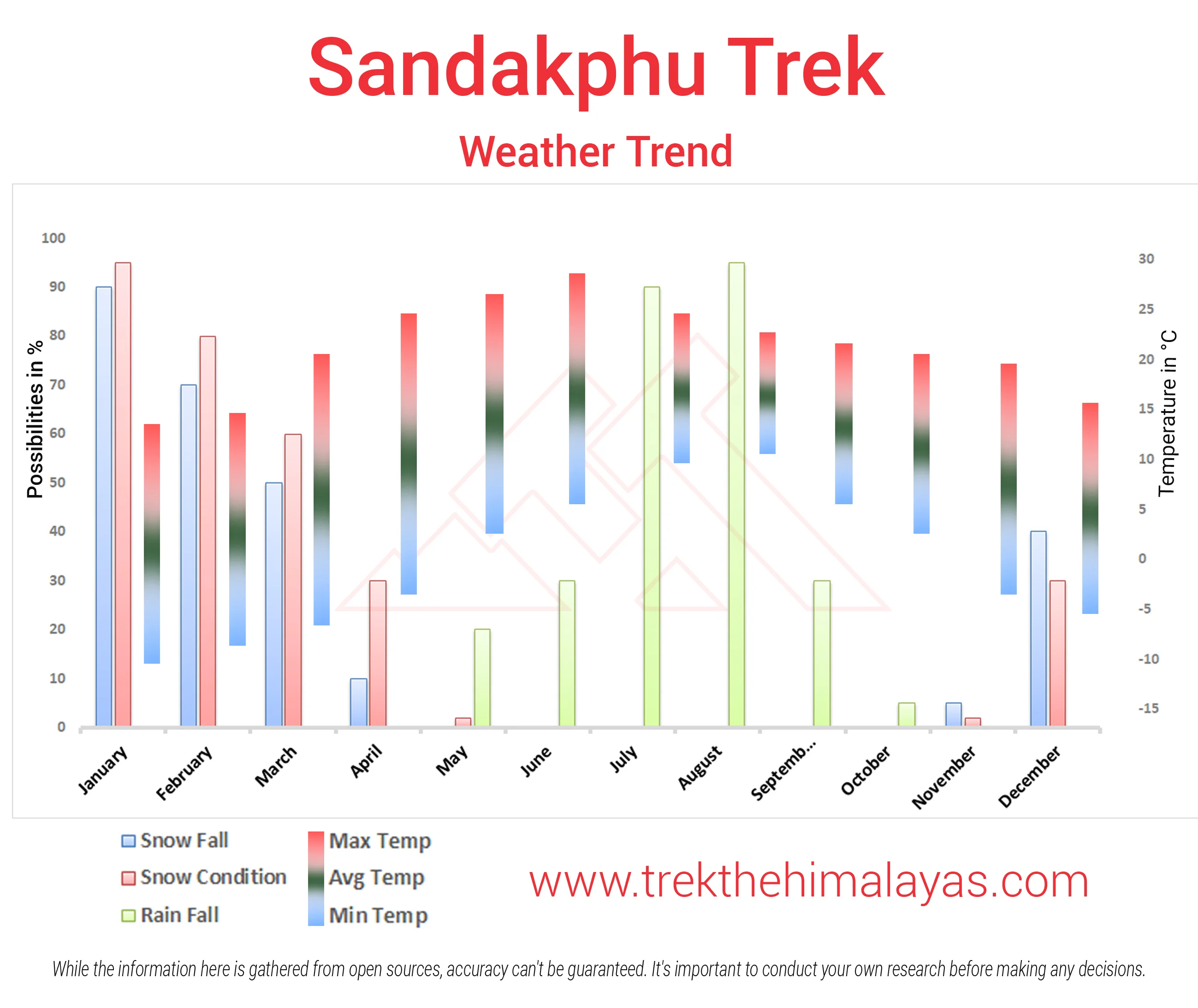
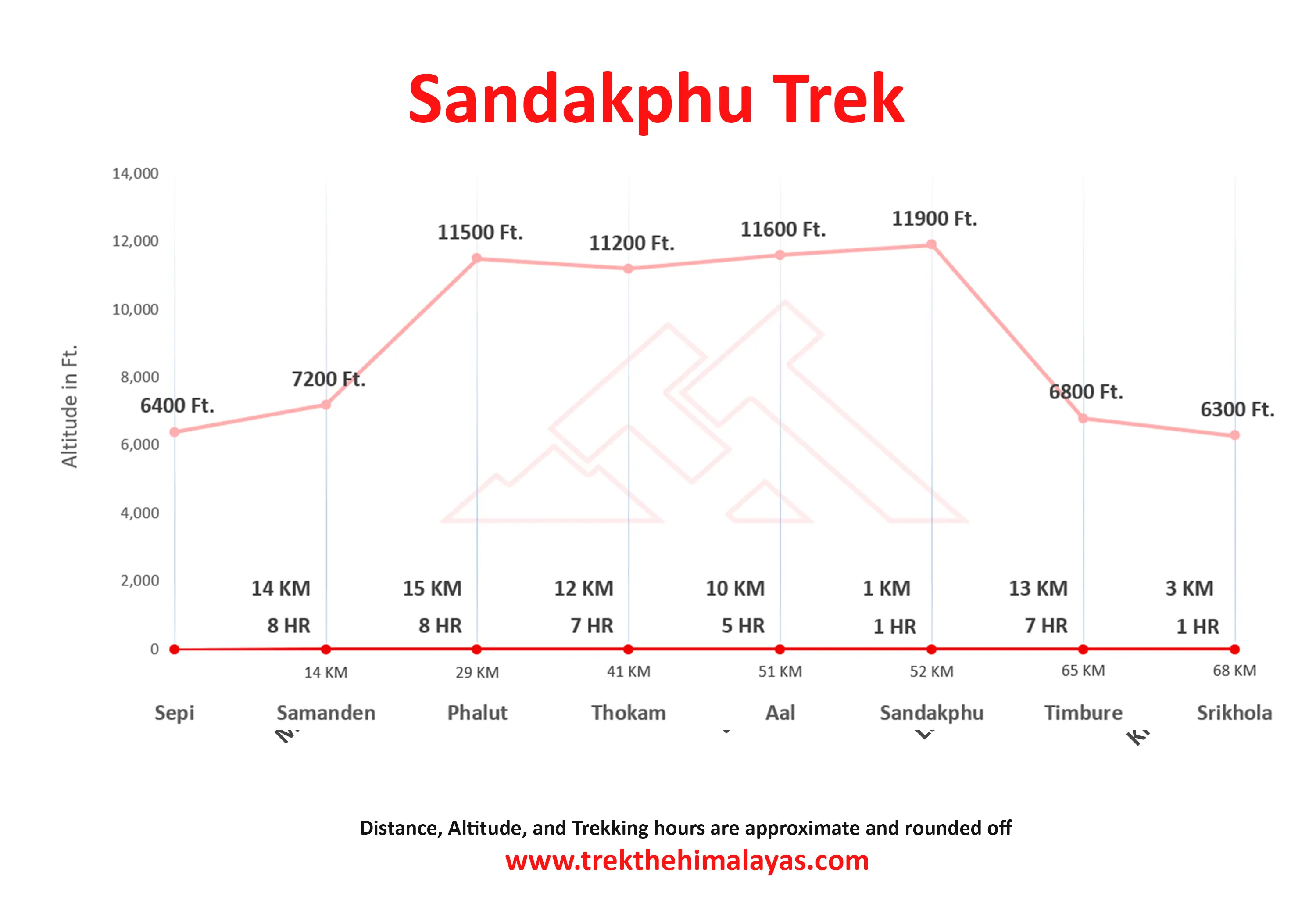
.webp)
- Pulse rate at rest must be in between (60 to 100 beats per minute).
- Blood Pressure Reading must be in between (DIASTOLIC 75 – 85, SYSTOLIC 100 - 130 mm Hg).
- Respiratory rate at rest must be in between (12 to 20 breaths per minute).
- Should not have Liver and kidney issues.
- Should not have Diabetes Mellitus, Bronchial Asthma, Heart problems, Hypertension, etc.
- No pacemaker implant.
- People with Sinus issues, Epilepsy please contact to trek coordinator before booking the trek.
- If your BMI is not normal, Please contact our Trek coordinator before Trek booking.
Medical & Disclaimer Form (Mandatory Documents) Click here to download Medical & Disclaimer Form
Government employees can avail the benefit of Special Casual Leave (SCL) when they join us for a trekking expedition. As per Pay Commission guidelines, up to 30 days of Special Casual Leave can be availed in a calendar year for trekking or mountaineering expeditions conducted through a registered organisation.
Trek The Himalayas is a registered adventure tour operator with the Indian Mountaineering Foundation (IMF) and the Ministry of Tourism (MoT), making your trek eligible for SCL benefits.
To apply, email us at info@trekthehimalayas at least 20 days before the trek departure date, with the following details:
- Trek name and trek date
- Booking details
- Full name
- Designation
- Department and department address
This benefit is exclusive to Indian Government employees and is applicable only for treks within India.
- Junior trekkers (below 15 years) should have a company of parents/guardians.
- Trekkers between 15 to 18 years can come solo with the disclaimer form signed by parent/guardian.
- Medical & Disclaimer Form (Mandatory Documents) Click here to download Medical & Disclaimer Form
TTH welcomes all trekkers to enjoy the amazing stargazing experiences in the Himalayas! Every night will be a window to the universe with an unforgettable connection with the cosmos.
You might have trekked to high altitudes, slept under star loaded skies, and wished you could see those twinkling stars closely. Well, TTH is turning that dream into reality! We are now bringing telescopes on our treks, giving you the incredible opportunity to gaze closely at constellations, stars, and planets. It is not only about the mountains anymore, but also about exploring the universe from some of the most beautiful and remote places on Earth.
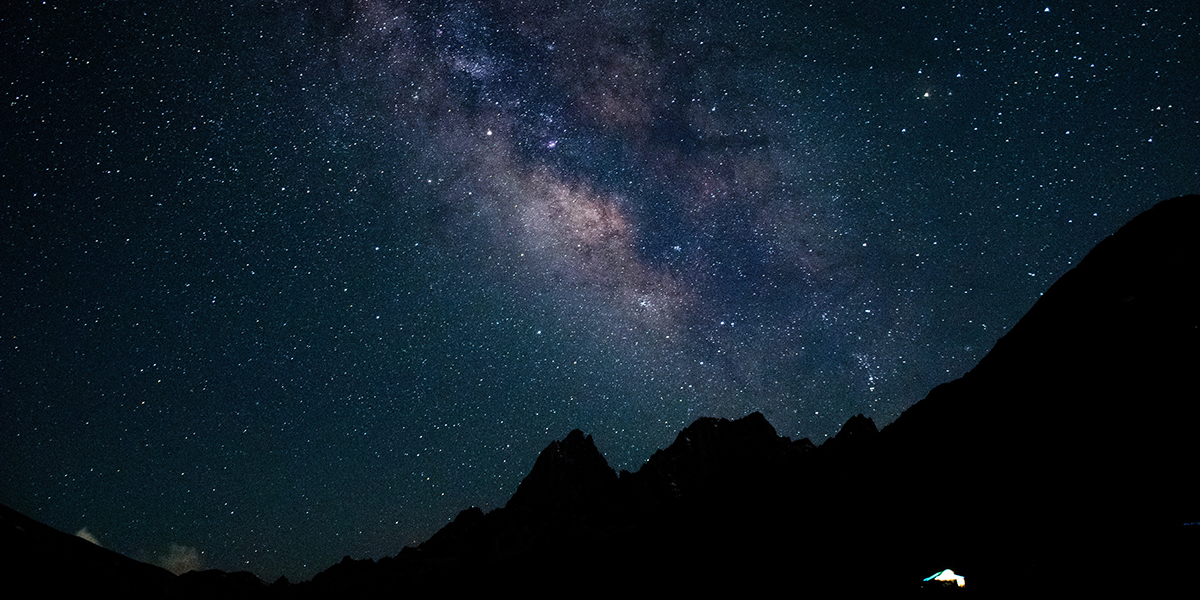
Your adventure can now be even more cosmic! Imagine lying under a blanket of stars, the night sky stretching endlessly above you, as you drift into dreams of distant galaxies.
Stargazing, the timeless art of gazing at the night sky and marvelling at the vast expanse of the universe. It’s more than just gazing; it’s an experience that connects us to the cosmos, inviting us to ponder the mysteries of the universe. As we trace constellations that have guided explorers for centuries and watch the beauty of the Milky Way, we feel a special connection with the universe.
Through the lens of stargazing, we gain a deeper appreciation for the natural world and our place within it. It invites us to slow down, look up, and lose ourselves in the celestial dance of the stars.
Why Stargazing with Telescopes on Treks is a Unique Experience?
High-altitude treks provide a perfect point for stargazing. The air is crisp and clear, far from the light pollution of cities, offering an unparalleled view of the night sky. Now, imagine using a telescope in these pristine conditions. You are not just looking at distant dots of light, but you can watch the stunning moon closely and spot lots of constellations and a few planets.
The silence of the mountains, paired with the vastness of space seen through a telescope, gives you a sense of how small yet connected we are to the universe.
It is a moment of reflection, wonder, and an experience that will stay with you long after you descend back into the valleys. With our guides this would not just be stargazing, but a full cosmic exploration and along with the serene background of the Himalayas the experience would be even more enhancing.
What can you spot with the Telescope?
Planets
Using our telescopes on these treks, you will get to see some of the most fascinating planets in our solar system up close including Venus, Jupiter, Saturn, and Mars.
Constellations and Stars
In the Himalayan night sky, countless stars twinkle overhead. With telescopes, not only do you get to see them more closely, but you can also locate entire constellations and even distant star clusters.
One of the most mesmerizing sights is the Andromeda Galaxy, the closest spiral galaxy to our Milky Way. With a telescope provided by Trek The Himalayas, you can spot this vast collection of stars, which appears as a faint, misty streak across the sky. It’s a humbling experience to gaze upon a galaxy that is 2.5 million light-years away, knowing that its light has travelled across the universe just to meet your eyes.
In addition to Andromeda, the Himalayan night sky is also home to the Milky Way Galaxy. During certain times of the year, the Milky Way appears as a dense, glowing band stretching across the sky, filled with countless stars, nebulas, and cosmic dust. It’s a sight that can make you feel like you’re peering into the galaxy's heart. The beauty of this structure and the sheer number of stars call it home.
You may also catch a glimpse of the Orion Nebula, one of the brightest and most studied star-forming regions in the night sky. Located in the constellation of Orion, this nebula is a stellar nursery, where new stars are born, and it glows with the light of young, hot stars. The constellations that make up our zodiac are also prominently visible, from the mighty Taurus to the graceful Gemini. These constellations, along with others like Ursa Major, Cassiopeia, and the Southern Cross, form familiar patterns that have guided travelers and stargazers for centuries.
A Closer View of the Moon
Observing the Moon through a telescope offers an extraordinary experience, allowing you to see its craters, valleys, and surface features in stunning detail. The sharp clarity of these lunar landscapes creates a sense of wonder, making you feel as though you’re standing on the Moon itself, exploring its rugged terrain up close.
Sun
You can get a closer view of the sun through a telescope using a solar filter. Using a solar filter with a telescope allows you to observe the Sun in remarkable detail, offering a safe and enhanced view of its surface. With this setup, you can clearly see the fascinating features of the sun, providing a deeper appreciation of the dynamic activity on our closest star.
Closer View of Valleys and Mountain Ranges
Our telescope will give you a closer view of mountain peaks, ranges, and valleys, and let you clearly see birds and animals in the distance.
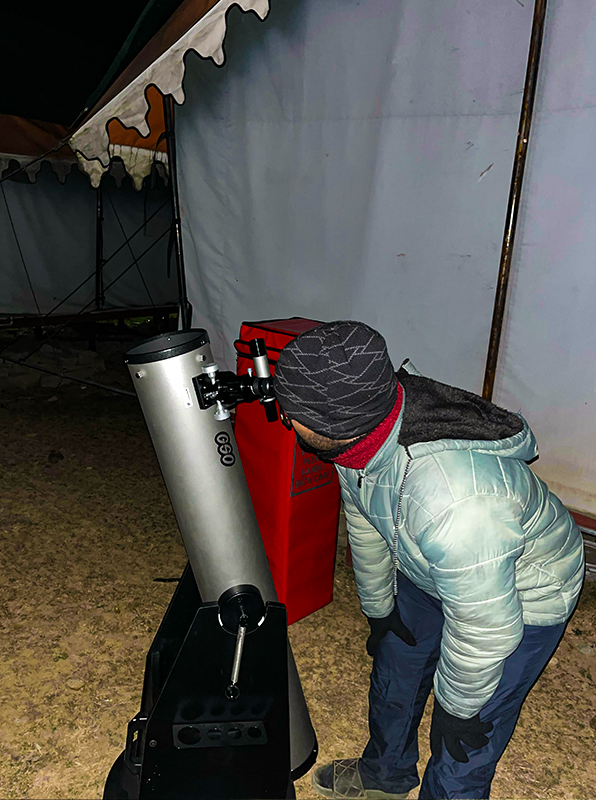
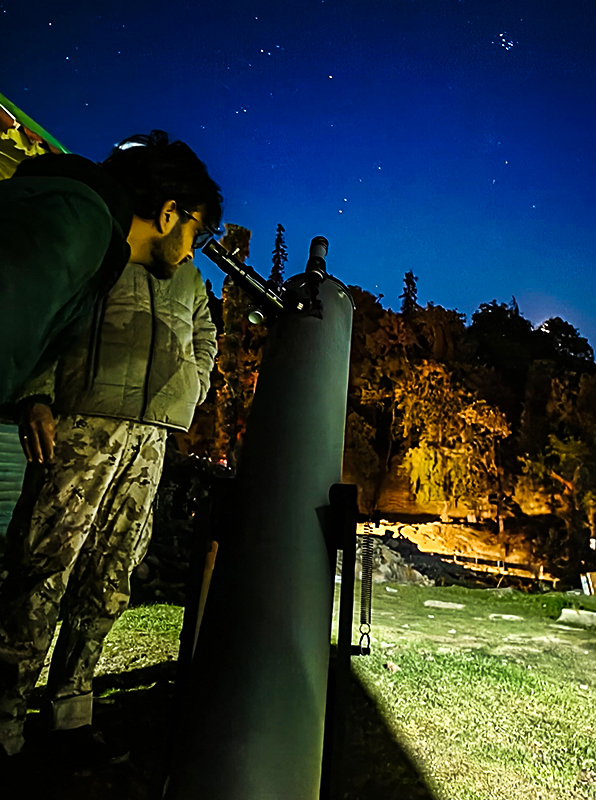
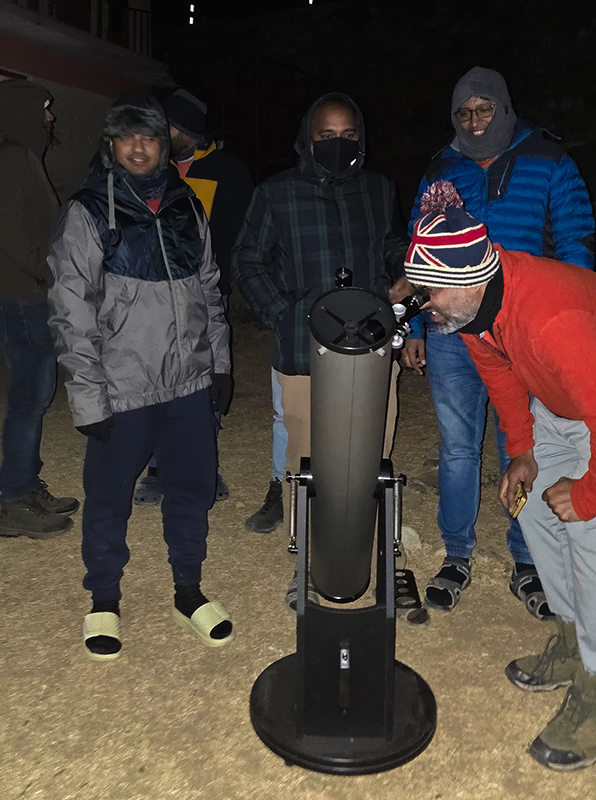
Specifications of our Telescope
We use a 6" Nightwatch Dobsonian Telescope by GSO (D=150mm / F=1200mm Dobsonian F/8 Telescope) to provide exceptional clarity and detail, enhancing your stargazing experience and making it truly special.
Ready to Explore the Universe with TTH?
At Trek the Himalayas, we believe in pushing the boundaries of adventure. Our new stargazing and planet-watching with telescopes offer a unique experience that blends the thrill of trekking with the awe of exploring the cosmos. Whether you are a seasoned trekker or new to the trails, this is an opportunity to see the night sky like never before.
TTH Special Stargazing Treks
We’ve added stargazing experiences to some of our most loved treks. On these treks, you can enjoy the night sky like never before!
Treks with Stargazing Experiences:
| Trek Name | Stargazing Campsite |
|---|---|
| Kedarkantha Peak Trek | Sankri Base Camp |
| Brahmatal Trek | Lohajung Base Camp |
| Sandakphu Trek | Samanden camp site |
| Surya Top Trek | Natin Base Camp |
| Dayara Bugyal Trek | Natin Base Camp |
| Winter Kuari Pass Trek | Pipalkoti Base Camp |
| Chopta Chandrashila Trek | Baniyakund Campsite |
| Ali Bedni Bugyal Trek | Lohajung Base Camp |
| Pangarchulla Peak Trek | Pipalkoti Base Camp |
Join us to explore the beauty of the night sky in a way that only the Himalayas can offer!
Important Links
- Mandatory Documents to Bring on A Trek Click Here.
- How to pay Add-ons, Submit Medical Forms, and Dietary Preferences Click Here to watch Video
How To Reach
Pick-Up Information
- It is essential for everyone to arrive at New Jalpaiguri Junction (NJP) (10:00 am)
- Once you have reached New Jalpaiguri Junction (NJP), TTH will manage the rest of your travel arrangements, if you have opted for TTH's pick-up service, you can select this option during the booking process by adding it as an add-on.
- Options to reach New Jalpaiguri Junction (NJP) railway station.
- Take a flight to Bagdogra Airport in West Bengal, and take a cab to NJP railway station, it’s 20 km away and will take 40 minutes.
- For trekkers staying in Darjeeling, the pickup point is Sukia Pokhari, near HDFC Bank Ltd, about 18 km from Darjeeling. The TTH vehicle will arrive around 12:00 PM. Please plan your travel accordingly and coordinate with your trek coordinator for further details.
Domestic: There are various direct and indirect flights from other cities. You can take direct flights from Delhi, Kolkata, Guwahati and other cities.
International: International terminal is well equipped with modern amenities. Druk Air is the airline which provides international flights to the passengers. International flights connect with Paro in Bhutan and Bangkok. These flights are direct and comfortable.
- Take a train to New Jalpaiguri Junction (NJP) that is well-connected to major cities like Kolkata, Guwahati, Delhi and Mumbai.
( If you prefer to travel independently, you can either take a government bus or book a private cab. Your trek coordinator will provide guidance on how to arrange for the bus or cab booking. )
Drop-Off Information
- Arrive in New Jalpaiguri (NJP) between 4:00 pm to 5:00 pm.
- The designated drop-off point is NJP railway station.
- Please consider planning your subsequent travel arrangements after 8:00 pm.
- The distance from Railway Station to Bagdogra Airport is 20 km, it will take approx 40 minutes.
- TTH offers comfortable transportation through Xylo, Bolero, or equivalent vehicles. If you wish to upgrade your mode of transportation, please contact your trek coordinator for further assistance.
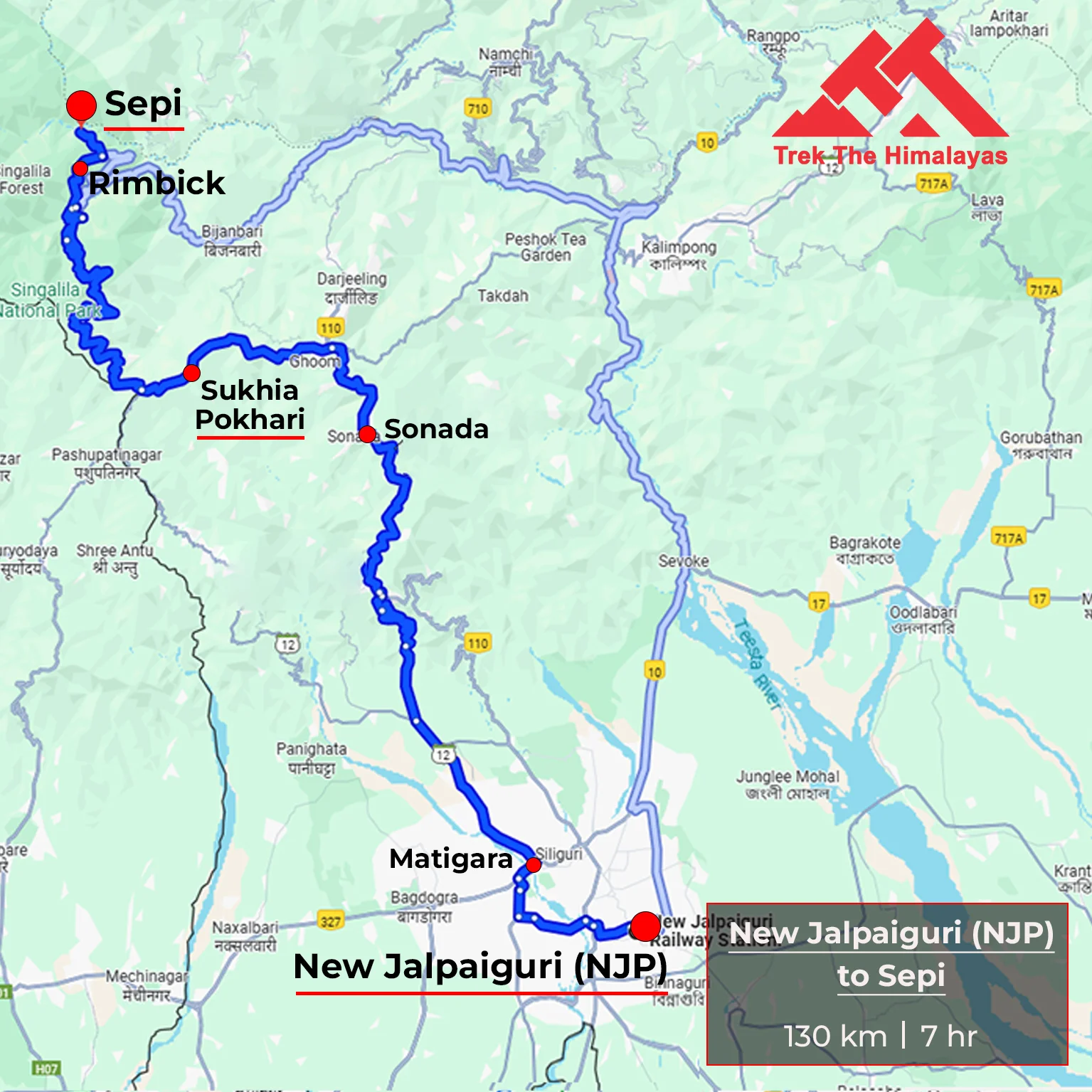
Cost Terms
Inclusion
1. Accommodation (as per the itinerary):
- Throughout the trek stay in a Tea house (Triple/quad/hexa sharing Male and female separately ).
2. Meals (Veg + Egg):
- Dinner at Sepi on Day 1 to Breakfast at Timbure on Day 7 as per the itinerary.
3. Support:
- 1 Versatile base camp manager: handles communication and deploys extra manpower in emergencies.
- 1 Mountaineering & First aid qualified professional trek Leader.
- 1 Experienced high-altitude chef.
- Local experienced guides (Number of guides depending on the group size).
- Enough support staff.
4. Trek equipment:
- Kitchen & Dining tent, Toilet tent, and Utensils.
- Camping stool, Walkie-talkie.
- Ropes, Helmet, Ice axe, Harness, Gaiters & microspikes (if required).
5. First aid:
- Medical kit, Stretcher, Oxygen cylinder, Blood pressure monitor, Oximeter, Stethoscope.
6. Mules/porters to carry the central luggage.
7. Cloakroom facility available at the base camp for additional luggage.
8. All necessary permits and entry fees, up to the amount charged for Indians.
9. Services from Sepi to Sepi.
10. Insurance only for Indian trekkers
11. Trek Completion Certificate.
Exclusion
- Insurance (For non-Indian Nationals, NRI or OCI card holders).
- Food during the transit.
- Any kind of personal expenses.
- Mule or porter to carry personal luggage.
- Emergency evacuation, hospitalization charge, etc.
- Any extra costs incurred due to extension/change of the itinerary due to natural calamities roadblocks, vehicle breakdown, etc. factors beyond our control
- Transport from NJP to Sepi and return as per the itinerary.
- Anything not specifically mentioned under the head Inclusion.
Things can be provided on demand and availability (participant has to pay extra for these things).
1- Satellite phone/set phone - a type of mobile phone that connects via radio links via satellites orbiting the Earth instead of terrestrial cell sites like cell phones. Therefore, they can operate in most geographic locations on the Earth's surface.
Note: Satellite phones are prohibited in Leh-Ladakh, Kashmir, Sikkim due to security concerns related to its proximity to sensitive international borders. Only authorized personnel, like government officials and military, can use them with special permission from the Department of Telecommunications (DoT).
2- Gamow/PAC HAPO Bag (Portable Hyperbaric Bag) - is a unique, portable hyperbaric chamber for the treatment of acute mountain sickness (AMS), also known as altitude sickness.
3- AEDs (Automated External Defibrillators) - are portable life-saving devices designed to treat people experiencing sudden cardiac arrest, a medical condition in which the heart stops beating suddenly and unexpectedly.
Cancellation Terms
To request a cancellation, please email us at info@trekthehimalayas.com using your registered email ID.
Cancellations prior to 25 days from the start of the Trip
Refund Options
- 5% deduction of trek fee
- 100% trek fee cash voucher for any trip till one year
- Transfer your trek (any trek, any date) to your friend
Cancellation between 24 days and 15 days to the start of the Trip
Refund Options
- 30% deduction of trek fee
- 100% trek fee cash voucher for same trip till one year
- 85% trek fee cash voucher for any trip till one year
- Transfer your trek (same trek, any date) to your friend
Cancellation between 14 days and 10 days to the start of the Trip
Refund Options
- 50% deduction of trek fee
- 80% trek fee cash voucher for same trip till one year
- 70% trek fee cash voucher for any trip till one year
- Book the same trek, in the same season, with any other batch
- Transfer your trek (same trek, any date) to your friend
Cancellation less than 9 days to the start of the trek.
Refund Options
- No cash refund
- 20% trek fee cash voucher for the same trip till one year
- 10% trek fee cash voucher for any trip till one year
- Transfer your trek (same trek, same date) to your friend
- To reschedule a trek (same trek only), a 30 % rescheduling fee of the trek cost will apply.
Cancellation Policy (Emergency Cases):
In case of a death in the immediate family (parents, siblings, spouse, children) or if the trekker is hospitalized (min. 48 hours) or suffers a fracture (leg/arm) within a week before the trek, even if canceled a day before:
90% trek fee refund in cash & 10% as a voucher (valid for 1 year, for any India trek).
Valid documents required. We’re here to support you during tough times.
Note:
- Change of trek batch is dependent on the availability of seats in the batch
- In case of transferring a trek to a friend, he/she should satisfy all the mandatory requirements put forward by TTH
- TTH holds the right to change/cancel the policies, without prior notice
Booking and Payments
- The Participant is responsible for verifying the accuracy of all details, including Trip dates and personal documentation, at the time of booking.
- Payments must be made in accordance with the timelines and instructions provided by TTH. Late payments may result in cancellation of booking without refund.
- In the event of a cash refund, only the portion of the payment made in cash shall be eligible for refund in cash. Any booking made using voucher, discounts, promotional codes, or through any non-cash mode of payment shall not be eligible for a cash refund under any circumstances.
- Refunds, if applicable, shall be processed within 15–30 working days of confirmation.
- All add-on bookings are subject to the respective add-on cancellation policy, and refunds will be processed accordingly.
- Voucher Terms
- This is a non-transferable voucher
- The voucher cannot be merged with any other offer of Trek The Himalayas
- The voucher is valid for Trek booked directly with Trek The Himalayas in India
- To avail the voucher please use your register phone number or e-mail id
- All the other Terms of booking a trek with Trek The Himalayas are applicable to the voucher
Itinerary and Modifications
- TTH reserves the right to modify, shorten, or cancel any part of the Trip due to transportation delays, weather, health emergencies, or other unforeseen circumstances including Force Majeure.
Cancellations and Refunds
- No refunds or vouchers, partial or otherwise, shall be provided for voluntary withdrawal, non-utilisation of services, or removal from the Trip.
- If TTH cancels the Trip before arrival at the designated pick-up point due to unforeseen circumstances or Force Majeure, the Participant may choose from:
- An alternate Trip/date.
- A credit voucher valid for one (1) year.
- Transfer to another Trip, with cost differences payable by the Participant.
- If the Trip is abandoned post-arrival at the designated pick-up point, no cash refund or voucher shall be issued. The Trek Again Policy may apply at TTH’s discretion.
- TTH shall not be liable for any associated travel costs such as flights, accommodation, or visa fees.
Force Majeure
- Events beyond its control including but not limited to earthquakes, landslides, strikes, curfews, war, pandemic, government restrictions, heavy rainfall or snowfall, windstorms, road blockages, trail disruption, or withdrawal of permits, TTH shall not be held liable for any cancellation, delay, or service modification caused by Force Majeure.
Trek Essentials
Rent EquipmentPDF Of Trek Essential Download
| Backpack with rain cover | (50 - 60 ltr) with comfortable shoulder straps |
| Day pack with rain cover | 20 - 30 ltr (If off-load opted) |
| Walking stick | Advisable (At least one) |
| Water Bottle / Hydration pack | 2 thermos flask bottles of one liter each, Avoid hydration pack. |
| Small size tiffin/lunch box | 1 Nos |
| Snacks | Energy bars, dry fruits, electral/ors |
| Personal Medical Kit | Consult your doctor |
| T-Shirt (Synthetic quick dry) | 1 Full & 1 Half sleeves |
| Fleece T-shirt | 2 Nos |
| Wind stopper / Fleece jacket | 1 Nos |
| Windproof Jacket | 1 Nos |
| Down feather / Hollow jacket | 1 Nos. |
| Thermal inner (Upper and Lower) | 1 Pair |
| Trek Pant (Synthetic quick dry) | 1 Nos. |
| Wind stopper / Fleece Pant | 1 Nos |
| Waterproof gloves | 1 Pair |
| Fleece / woollen gloves | 1 Pair |
| Poncho / waterproof Jacket and pant | 1 Nos. |
| Sunscreen | 1 Nos. |
| Moisturiser | 1 Nos. |
| Chap-stick / Lip balm | 1 Nos. |
| Toothbrush and toothpaste | 1 Nos. |
| Toilet paper & Wipes | 1 Nos. |
| Hand sanitizers | 1 Nos. |
| Antibacterial powder | 1 Nos. |
| Quick dry towel | 1 Nos. |
| Head torch | 1 Nos. (Avoid Hand torch) |
| Sun Cap | Not required |
| Woolen cap | 1 Nos. |
| Balaclava | 1 Nos. |
| Buff / Neck-gaiters | 2 Woollen |
| Sunglasses | UV with dark side cover, People who wear spectacles - (A)- Use contact lenses | (B)- Photo chromatic glasses |
| Trekking shoes | 1 Pair (Water-resistant, high ankle, good grip) |
| Floaters / flip-flops | Not required |
| Cotton socks | 4 pairs |
| Woollen socks | 3 pairs |
| Gaiters | 1 Pair (TTH provides when required) |
| Micro spikes | 1 Pair (TTH provides when required) |
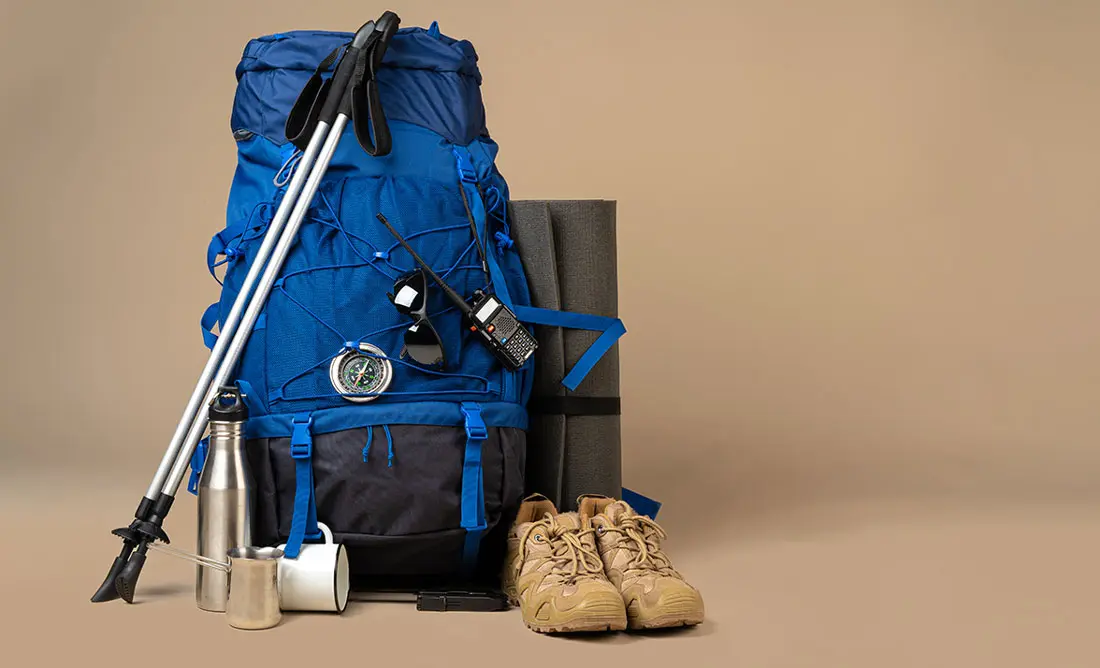
Frequently Asked Questions(FAQ)
To register with TTH, visit our website - www.trekthehimalayas.com and create your account. To create your account you will need to use your email address and fill in all the details, set your unique password and your account is ready to use.
- To book a trek with TTH, you first need to register with us and create an account.
- Choose the trek that you want to do and click on available dates.
- You will land at the login page, fill in the required details.
- Add Participants, choose add-on services click on the Pay now button, choose your preferred payment method, and make the payment. TTH accepts multiple payment options, including credit/debit cards, net banking, and UPI.
- You will receive a confirmation email from TTH with all the necessary details about the trek, including the meeting point, transportation, accommodation, and other important instructions.
- Click Here to watch Video
please send an email to us at info@trekthehimalayas.com or reach out to the numbers provided in the Help and Support section of your Trek Page. We will ensure that your issue is promptly resolved.
To book services such as off-load luggage and transportation, you can find them listed as add-ons. These additional services can be booked at the time of your initial booking. If you miss booking add-ons during the initial reservation, you can log in anytime and easily book 4 days before the departure date add-ons through the platform.
If you have booked the wrong trek or selected the wrong date, don’t worry! You can contact us at +91 9368882322 (Monday to Saturday, 10 AM to 10 PM) or email us at info@trekthehimalayas.com. You can also discuss this with your trek coordinator. Please make sure to inform us at least 10 days before the departure of your trek. Only then can we help you reschedule or arrange another trek for you.
We recommend visiting our "Suggest Me a Trek" page. By filling out the form, our experts will contact you with the best possible trek options based on your preferences and experience level. Alternatively, you can reach out to us via email at info@trekthehimalayas.com or give us a call using the numbers provided on our website for personalized assistance and recommendations.
Family treks differ from regular treks by focusing on ease of difficulty, offering shorter durations for younger participants, Kid-friendly and easily digestible foods, child-friendly activities, maintaining a higher guide ratio for diverse age groups, and implementing additional safety measures for families.
Family Trek with Kids recommendation Only Dayara Bugyal and Chopta Chandrashila Trek.
Minimum age for TTH treks is typically 7 years, though this may vary depending on the specific trek.
Yes, you can take a kids to a high-altitude trek with a parent. Discuss with a trek expert before booking a trek.
- Junior trekkers (below 15 years) should have a company of parents/guardians.
- Trekkers between 15 to 18 years can come solo with the disclaimer form signed by parent/guardian.
- Medical & Disclaimer Form (Mandatory Documents) Click here to download medical and disclaimer form
Physical Fitness: Ensure your child is physically fit. Engage them in regular exercise, outdoor activities, and hikes to build stamina and endurance. Hydration: Emphasize the importance of staying hydrated at high altitudes. Encourage your child to drink water regularly, even if they don't feel thirsty. Proper Nutrition: Provide a well-balanced diet with sufficient carbohydrates for energy and foods rich in iron to prevent altitude sickness. Adequate Sleep: Ensure your child gets enough sleep in the days leading up to the trek. Quality rest is crucial for altitude adaptation. Educate on Altitude Sickness: Teach your child about the symptoms of altitude sickness, such as headache, nausea, and dizziness. Encourage them to communicate any discomfort immediately. Appropriate Clothing and Gear: Dress your child in layers to adjust to changing temperatures. Ensure they have appropriate trekking gear, including sturdy footwear. Positive Mindset: Foster a positive mindset. Encourage your child, and let them know it's okay to take breaks when needed. Medical Check-Up: Schedule a medical check-up before the trek to ensure your child is fit for high-altitude activities. Consult with a healthcare professional about any potential health concerns.
TTH takes special care to provide wholesome and nutritious food for children on treks. Here are some of the foods that are typically served for children:
Breakfast: For breakfast, TTH serves a variety of options like porridge, cornflakes, bread, butter, jam, honey, boiled eggs, omelettes, and pancakes. Children can choose from these options to fuel themselves for the day's trek.
Lunch: For lunch, TTH serves lunch which includes rotis, vegetables, rice, dal, and salad. The rotis are usually made fresh on the trek and are a good source of carbohydrates. The dal and vegetables provide protein and other essential nutrients.
Snacks: TTH provides healthy snacks like fresh fruits, dry fruits, energy bars, cookies, and biscuits to keep the children energized throughout the day.
Dinner: For dinner, TTH serves a hot and wholesome meal which includes soup, rice, dal, vegetables, and a non-vegetarian dish (if requested in advance). Children can also choose from a variety of desserts like custard, jelly, and fruit salad.
Dietary requirements: If a child has any special dietary requirements, TTH can cater to those needs as well. For example, if a child is lactose intolerant or allergic to nuts, the kitchen staff can make arrangements to accommodate those requirements.
Choosing the right trek for a beginner can be a bit overwhelming as there are many factors to consider such as distance, elevation gain, terrain difficulty, weather, and time of year. Here are some tips that can help you choose the right trek for a beginner:
1. Determine fitness level: Assess the fitness level of the beginner to understand their physical capabilities. This will help you select a trek that is challenging but not too difficult.
2. Choose a well-traveled trail: A well-traveled trail will have more amenities such as signposts, water stations, and shelter. It is also safer as there will be other hikers on the trail.
3. Consider the length of the trek: For beginners, it is recommended to start with a shorter trek that can be completed in a day or two. This will help them get acclimatized to trekking and build their confidence.
4. Look for gradual elevation gain: Choose a trek with a gradual elevation gain rather than steep ascents. This will make the trek easier and more enjoyable.
5. Check the weather: Check the weather forecast before selecting a trek. Avoid treks during the monsoon season or winter when the trails can be slippery or dangerous.
6. Research the trail: Read about the trail to get an idea of the terrain, altitude, and difficulty level. This will help you select a trek that is suitable for the beginner.
7. Consult with an expert: If you are unsure about which trek to choose, consult our trek expert Mr. Nitin (+91 70600 59773) between 10 AM to 6 PM (Tuesday - Friday). Mr. Nitin will provide you valuable advice and guidance.
Overall, it is important to choose a trek that is enjoyable, challenging but not too difficult, and suitable for the beginner's fitness level and experience.
It is not recommended for a beginner to choose a difficult Himalayan trek. Trekking in the Himalayas can be physically and mentally challenging, especially if you are not used to the high altitude, steep slopes, and rugged terrain. Choosing a difficult trek without the proper experience, fitness level, and preparation can be dangerous and put you at risk of altitude sickness, injury, and other hazards.
If you are a beginner, it is recommended to start with an easier trek and gradually build up your skills and experience. This will help you understand the challenges of trekking in the Himalayas, and also prepare you physically and mentally for a more difficult trek in the future. It is also important to choose a trek that matches your fitness level, experience, and interest.
There is no specific age limit for a beginner trekker. However, it is important to consider your physical fitness, health condition, and personal interests before embarking on a trek. Trekking in the Himalayas can be physically and mentally demanding, and requires a certain level of physical fitness and endurance.
If you have any pre-existing medical conditions or are above a certain age, it is recommended to consult with a doctor before embarking on a trek. It is also important to listen to your body and take breaks as needed during the trek to prevent exhaustion or injury.
We recommend visiting our "Suggest Me a Trek" page. By filling out the form, our experts will contact you with the best possible trek options based on your preferences and experience level. Alternatively, you can reach out to us via email at info@trekthehimalayas.com or give us a call using the numbers provided on our website for personalized assistance and recommendations.
Yes, you can join the trek. We have fixed departure groups where you can simply book your trek and we will take care of curating a group.
Before you start the trek, it is recommended that you make all the necessary phone calls as during the trek you may or may not receive network coverage, once you come back to the Base Camp, you can reconnect with your family via phone once again. You can share your trek coordinator contact detail with your family members to get the latest updates about your trek batch.
At TTH, we provide wholesome and nutritious meals during the trek. The food is vegetarian and includes a variety of dishes such as rice, dal, vegetables, chapati, paratha, pasta, noodles, and soup. We also offer snacks such as biscuits, and salty, and dry fruits during the trek. Special dietary requirements such as vegan, gluten-free, or Jain food can also be arranged if informed in advance.
If you are allergic to some foods, you need to let us know in advance so that we can make arrangements accordingly.
TTH is a trekking company that prioritizes the safety of all its participants, including women trekkers. We have a comprehensive safety system in place, which includes a dedicated team of experienced and trained trek leaders and support staff who are equipped to handle emergency situations and provide first aid.
TTH also takes specific measures to ensure the safety and comfort of women trekkers. They have a separate tent accommodation for women trekkers, female trek leaders, and support staff. They also provide separate toilet facilities for women and encourage a safe and respectful environment for all trekkers.
Moreover, TTH has a strict policy against any kind of harassment and has a zero-tolerance policy towards such incidents. They have a designated Internal Complaints Committee (ICC) to investigate and address any complaints related to harassment or misconduct. Overall, TTH has a good reputation for safety and responsible trekking practices, and women can feel comfortable and safe while trekking with them.
In case you are the only women in the group, we provide a single sleeping arrangement. Also, during the trek, the trek leader will always remain by your side to provide optimum safety and reassurance.
You can reach out to the trek coordinator to inquire about the number of female trekkers and their respective states who have booked the trek. Please note that the trek coordinator cannot disclose personal details of any trekker. Once you've confirmed your booking, a WhatsApp Group will be created for all the trekkers in your batch. This allows you to connect with fellow trekkers before the trek begins.
While many of our treks are led by female trek leaders, however, it is not possible to know which trek leader is assigned to which group. But nonetheless, whether the trek leader is male or female you can be completely assured of your safety and security with us.
Yes, it is possible to trek with periods. However, it is important to take some extra precautions and preparations to ensure a comfortable and safe trekking experience. Here are some tips that can help you trek during your period:
1. Use menstrual hygiene products that you are comfortable with, such as tampons, pads, or menstrual cups. It is recommended to carry enough supplies for the entire duration of the trek.
2. Pack wet wipes, hand sanitizer, and plastic bags to dispose of used hygiene products.
3. Wear comfortable and breathable clothing that allows for easy movement and reduces friction. Avoid wearing tight or restrictive clothing that can cause discomfort.
4. Carry pain relief medication, such as ibuprofen or acetaminophen, in case of menstrual cramps.
5. Stay hydrated and maintain a balanced diet to support your energy levels and overall health.
6. Take breaks as needed and listen to your body. If you feel uncomfortable or experience any unusual symptoms, seek medical attention immediately. It is also recommended to consult with a doctor before going on a trek during your period, especially if you have a pre-existing medical condition or are taking medication.
By taking necessary precautions and being prepared, you can have a safe and comfortable trekking experience even during your period. We provide proper disposal facilities for sanitary pad disposal during the trek.
We offer three person tents with twin-sharing for optimum comfort. A woman trekker will share a tent with another woman trekker and if you are the only woman in the group, you will be given a single accommodation for your comfort and privacy.
Yes, we do provide gears on rent. You can book it using you TTH account directly.
Mountaineering qualified Experienced and first aid certified Trek Leader, First Aid Certify local guide, Cook, helpers and supporting staff.
People suffering from Bronchitis, Asthma, High blood pressure, Epilepsy (got faints), TB , Heart problem or on higher BMI side are strictly not allowed to go on any Himalayan trek. Apart from this if you had any medical history, please let us know.
No. Alcohol and smoking isn’t allowed while on trek. It is totally misconception that it will keep you warm. Your body need to acclimatize properly and for that eat properly and drink enough water; these things will keep you warm.
Toilet tents provide a convenient solution for answering nature's call in the great outdoors. Dry toilets, in particular, offer a highly sanitary approach. By digging a pit and utilizing mud and a shovel, you can easily cover up your waste. This method ensures cleanliness and hygiene while camping or exploring in the forest.
Remember to pack essential toiletries to complete your outdoor bathroom kit and maintain proper personal hygiene during your adventures. With these practices in place, you can enjoy nature while also respecting it.
Layer Up From Head To Toe
Eat Full Meals, never sleep empty stomach
You can keep warmee (if you’re more susceptible to cold).
Use sleeping bag in right way and don’t leave free space in sleeping bag.
For upper body
– Thermal layer
– T-shirt (full-sleeves)
– Fleece T-shirt (for extreme colds)
– Fleece layer
– Thick Jacket/Down Jacket
– Waterproof or Windproof layer (outermost layer, when it is snowing or raining)
- For Lower Body
– Thermal layer
– Hiking pants (normal) or Winter hiking pants
Based on how warm you feel you can skip any of the above layers. Your outer later should be windproof since it is windy at high altitude.
The idea behind layering is that the more insulation you have the less cold you feel, and instead of wearing a very thick jacket if you wear multiple layers, your body will be better insulated against the cold.
Yes, we provide micro spikes and gaiters, if required.
Mandatory documents: 2 xerox of ID having address (addhar card/driving license), 2 Passport size photographs, hard copy Medical form signed & sealed by doctor, disclaimer form sign by trekker and high altitude insurance.
No. We don’t but we can suggest you good hotel/Stay nearby pick up location.
Yes, trekker must carry 2 water bottles 1 litre each so they can refill it at campsite for drinking and keep themselves hydrate.
You should buy shoes which has these three features –Good grip, Ankle Support and additional water resistant layers. Generally, we advise Quechua Trek 100, MH 500 and MH 100.
No one is forced to go on. There is always enough staff to split the party according to need and regroup later at the camp. Most people have no trouble reaching the highest campsite. If some members decide not to climb the final distance they can wait for the climbers to come back down the same way or take a lateral path to the descent route.
The Sandakphu Trek is located in the Indian state of West Bengal. The trail lies within the Singalila National Park and mostly runs through West Bengal's Darjeeling district and parts of eastern Nepal.
The altitude of Sandakphu trek is approximately 12,000 ft.
Sandakhphu trek is extremely popular due to the sights of four peaks of the world among five peaks. These four peaks include Mount Everest, Kangchenjunga, Lhotse and Makalu. The hike also allows you to hike around adorable villages, beautiful forests of rhododendrons and some ridgelines. The trek also has one of the most picturesque views of the Sleeping Buddha, a group of mountains that resembles a reclining figure.
The distance of Sandakphu Trek is around 68 Km. During the journey, you will find all the beauty of West Bengal. As much as this trek is beautiful, it is equally beautiful to see the culture of this place. The trek starts from the Sepi, but the journey of this trek will amaze you the moment you enter West Bengal. TTH mostly organises Uttarakhand and Himachal treks, but Sandakphu happens to be the one of the best West Bengal treks of India and TTH.
The Sandakphu Trek is considered a moderate trek. It is also considered as a beginner friendly trek. Many trekking enthusiasts choose Sandakphu as their first trek and sometimes there are repetitive trekkers because of its beauty. It is a 7 days trek, which includes 5 to 7 hours of walking daily, that can be done easily with a smooth pace.
The Sandakphu Trek can be done in spring, summer, autumn and winter seasons. If we talk about the best months for the Sandakphu Trek, then it can be done in March, April, September, October, and November. All these months are best suited for this particular trek. If we talk about the beauty, in March and April, you will find the abundance of rhododendrons, and wild flowers, along with all the west bengal greenery. From September to November, you will see the mountain views more clearly, as it is a post monsoon season.
Yes, the Sandakphu Trek is safe when done with a certified trekking organization and under the guidance of experienced trek leaders. When you trek with a reputed operator like Trek The Himalayas (TTH), you are accompanied by trained trek leaders, local guides, and a support team equipped to handle altitude-related emergencies.
The trek usually starts from Sepi. It is reachable by road from New Jalpaiguri (NJP).
Since the trek goes through Singalila National Park, an entry permit is required. If you’re trekking with TTH, we arrange this for you. All the necessary permit arrangements are taken care of on your behalf.
360° views from Sandakphu
Beautiful views of Everest and Kangchenjunga ranges
The Sleeping Buddha formation
Rhododendron forests in bloom
Cultural experiences in local villages
Altitude sickness is a risk on high-altitude treks. To minimize the risk, ascend gradually, stay hydrated, and allow good time for acclimatization. If symptoms occur, it's important to update your trek leader and they will help you with the best guidance and might provide medical attention if needed.
To maintain yourself comfortable at different temperatures, carry: Warm Clothing, Waterproof Jacket and Pants, Sturdy Trekking Boots, Sleeping Bag, Trekking Poles, Sunglasses, Sunscreen, and Lip Balm, Personal Medications and First Aid Kit.
Yes, most teahouses offer charging facilities, but there may be a small fee for using them. Bring a power bank as a backup to ensure you have enough power for your devices.
Yes, Sandakphu is one of the best treks for beginners. It has well-established trails, teahouse accommodation, and a moderate altitude of around 12,000 ft. The walk is long, but with steady pace and fitness, first-timers can enjoy it fully.
Yes, here are a few convenient options located within walking distance of NJP Railway Station:
- Tirupati Lodge NJP – Just 200 meters away (approx. 4-minute walk).
- Prince Lodge NJP – A budget-friendly option very close to the station.
- Radha Rani Lodge – Located about a 6-minute walk from the station.
- Hotel Golden Dragon – Another good option, only 6 minutes walking distance from the station.
All these properties are suitable for short stays and provide quick access to the railway station for onward journeys.
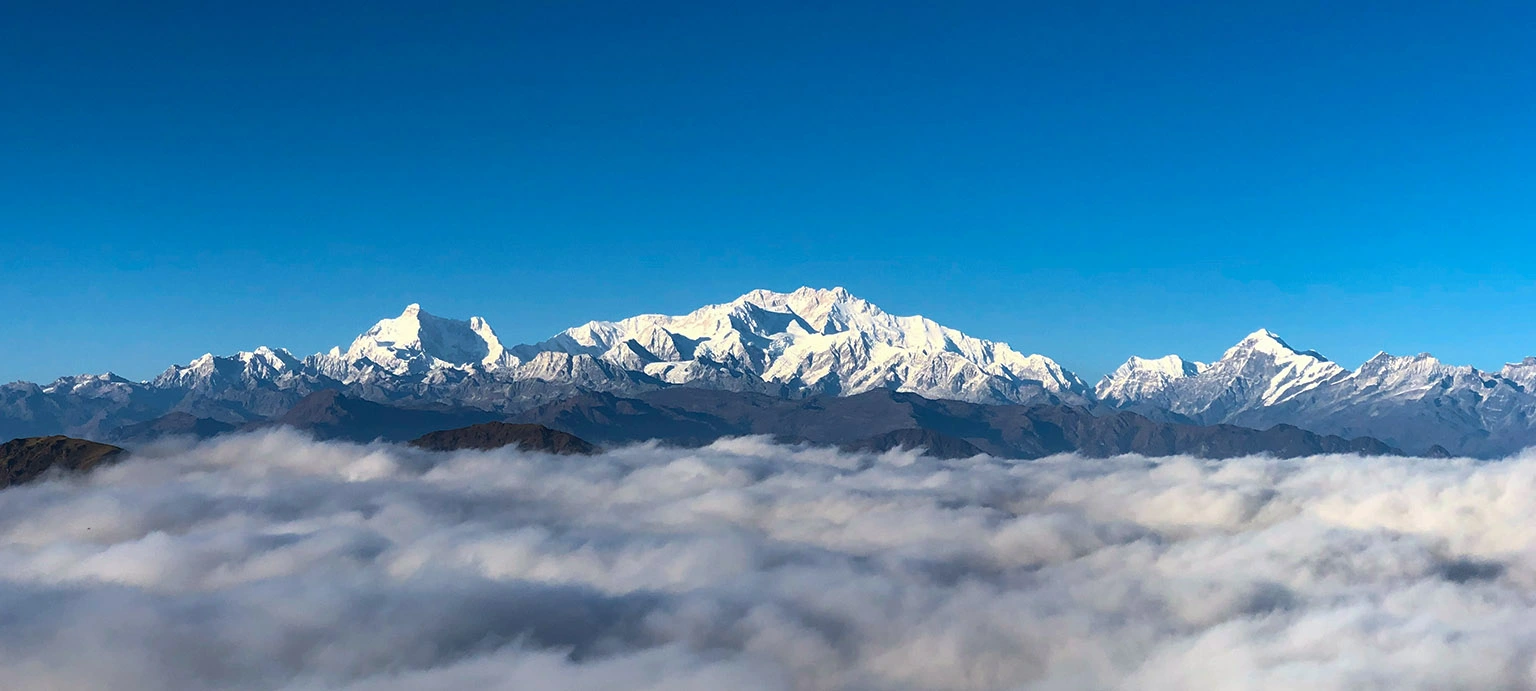

.webp)
.webp)
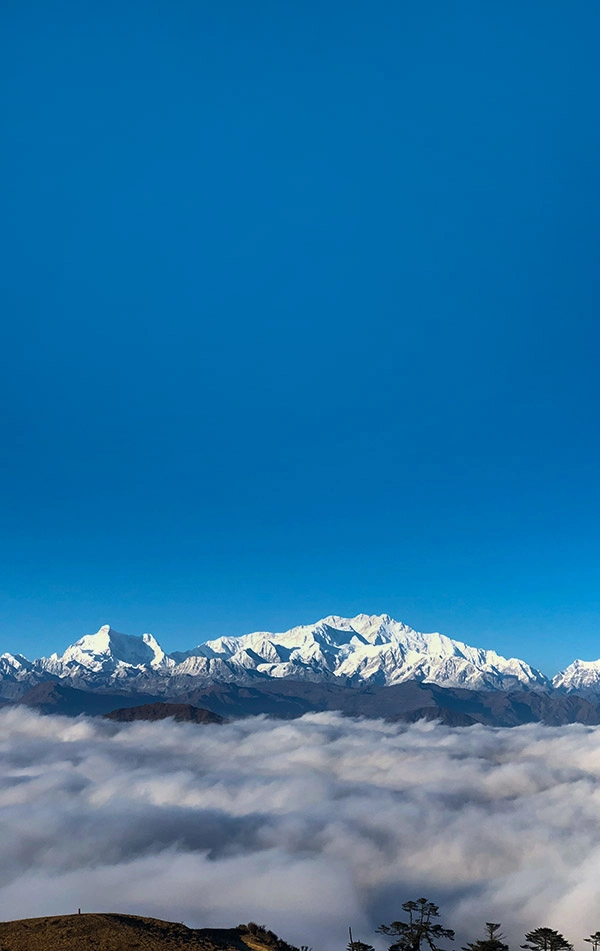
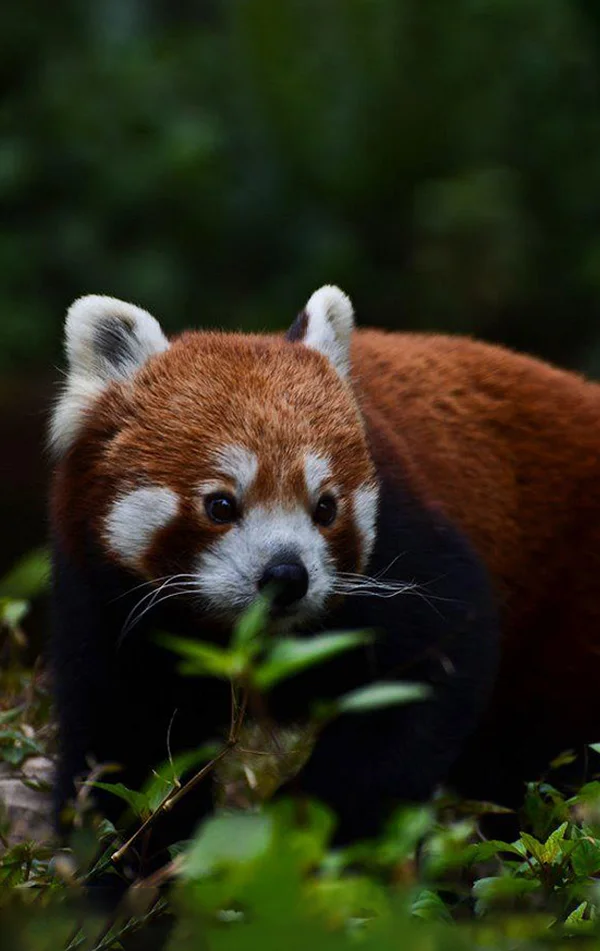
.webp)
.webp)
.webp)
.webp)
